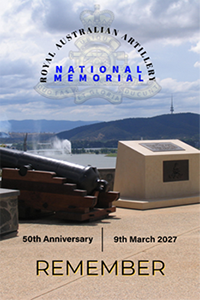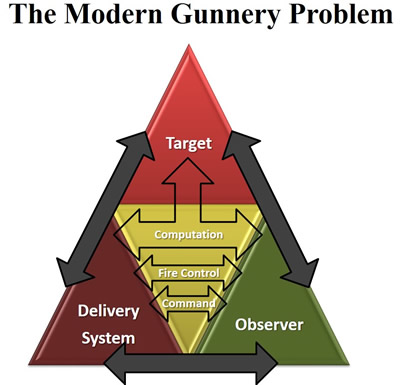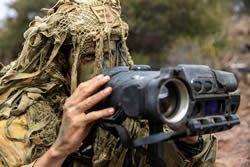|
||||||||||||||||||||||||||||||||||||||||||||||||||||||||||||||||||||||||||||||||||
| Have a Question / Feedback ? | Submit- only questions about this website will be answered | Search Our Site |
|
THE FUTURE READY ROYAL AUSTRALIAN ARTILLERY: A PERSPECTIVE |
|||||||||||||||||||||||||||||||||||||||||||||||||||||||||||||||||||||||||||||||||||||||||||||||||||||||||||||||||||||||||||||||||||||||||||||||||||||||||||||||||||||||||||||||||||||||||||||||||||||||||||||||||||||||||||||||||||||||||||||||||||||||||||||||||||||||||||||||||||||||||||||||||||||||||||||||||||||||||||||||||||||||||||||||||||||||||||||||||||||||||||||||||||||||
| Jeffrey McFarlane and Nick Floyd | |||||||||||||||||||||||||||||||||||||||||||||||||||||||||||||||||||||||||||||||||||||||||||||||||||||||||||||||||||||||||||||||||||||||||||||||||||||||||||||||||||||||||||||||||||||||||||||||||||||||||||||||||||||||||||||||||||||||||||||||||||||||||||||||||||||||||||||||||||||||||||||||||||||||||||||||||||||||||||||||||||||||||||||||||||||||||||||||||||||||||||||||||||||||
| Introduction | |||||||||||||||||||||||||||||||||||||||||||||||||||||||||||||||||||||||||||||||||||||||||||||||||||||||||||||||||||||||||||||||||||||||||||||||||||||||||||||||||||||||||||||||||||||||||||||||||||||||||||||||||||||||||||||||||||||||||||||||||||||||||||||||||||||||||||||||||||||||||||||||||||||||||||||||||||||||||||||||||||||||||||||||||||||||||||||||||||||||||||||||||||||||
The Royal Regiment of Australian Artillery (RAA) celebrated 150 years of continuous artillery service to Australia in August 2021. This anniversary provides an opportunity to look back and commemorate the valuable and enduring contribution the RAA and its predecessors have made to Australia’s defence capability. This paper reflects on the role of artillery and then considers the current structure and role of each of Australia’s artillery units and enabling force elements. It will then outline the enduring ‘gunnery problem’ and demonstrate its interrelationship with the range of artillery systems. The paper will then look to the future by discussing the six capability areas the recent Artillery Modernisation Program encompasses, being: self-propelled artillery, long range missiles and rockets, improved ammunition, new ground based air defence system, unmanned aerial systems and an upgraded digital terminal control system. The paper presents the capabilities for those systems that Australia has already chosen, then explores weapon systems Australia’s allies and peers currently have in service that Australia may seek to achieve at least parity with, and could potentially acquire to meet the requirements of the program. This will be done drawing from open source information, to illustrate the type of capability and technology already available. It will canvass only some of the many platforms in service; moreover, the platforms chosen and the order they are presented in no way reflect any suggestion that Australia should be purchasing them, or an assessment of their ranking compared to other nations’ systems.
1. Department of Defence, ‘2016 Defence White Paper,’ Commonwealth of Australia, P. 18. Available at: https://www.defence.gov.au/about/publications/2016-defence-white-paper. 2. Department of Defence ‘2016 Defence White Paper,’ Commonwealth of Australia, P. 18. Available at https://www.defence.gov.au/about/publications/2016-defence-white-paper. 3. Department of Defence ‘2020 Force Structure Plan,’ Commonwealth of Australia, available at: https://www.defence.gov.au/about/publications/2020-force-structure-plan 4. Department of Defence, ‘Investing in a capability edge, https://www.defence.gov.au/sites/default/files/2021-09/CapabilityFactsheet.pdf, accessed 21 Jan 22. |
|||||||||||||||||||||||||||||||||||||||||||||||||||||||||||||||||||||||||||||||||||||||||||||||||||||||||||||||||||||||||||||||||||||||||||||||||||||||||||||||||||||||||||||||||||||||||||||||||||||||||||||||||||||||||||||||||||||||||||||||||||||||||||||||||||||||||||||||||||||||||||||||||||||||||||||||||||||||||||||||||||||||||||||||||||||||||||||||||||||||||||||||||||||||
AUSTRALIAN ARTILLERYThe heritage of Australian Artillery originates on 1st August 1871. Previously, Australian Colonies had their own volunteer and part-time gunners that augmented British forces garrisoned in Australia. When the British forces left, there arose a need to raise permanent artillery forces to sustain the necessary critical technical gunnery proficiency. These first batteries, comprising Australian officers, gunners, guns and equipment served as both
Much has changed from the smoothbore, muzzle-loaded guns horse-drawn on field carriages used by the first Australian expedition during the Sudan War in 1885, to the artillery regiments of today. Today’s Australian artillery capability comprises three components.2
ROLE OF ARTILLERY
At the end of the First World War, the defined role of artillery used by British and Commonwealth armies was:
The current Australian definition is:
CURRENT UNITS AND RESPONSIBILITIESOrganisationally, the RAA consists of three fulltime field artillery regiments and one reserve regiment, one surveillance and target acquisition regiment and one air defence regiment, with career training for Gunners delivered by the School of Artillery.
|
|||||||||||||||||||||||||||||||||||||||||||||||||||||||||||||||||||||||||||||||||||||||||||||||||||||||||||||||||||||||||||||||||||||||||||||||||||||||||||||||||||||||||||||||||||||||||||||||||||||||||||||||||||||||||||||||||||||||||||||||||||||||||||||||||||||||||||||||||||||||||||||||||||||||||||||||||||||||||||||||||||||||||||||||||||||||||||||||||||||||||||||||||||||||
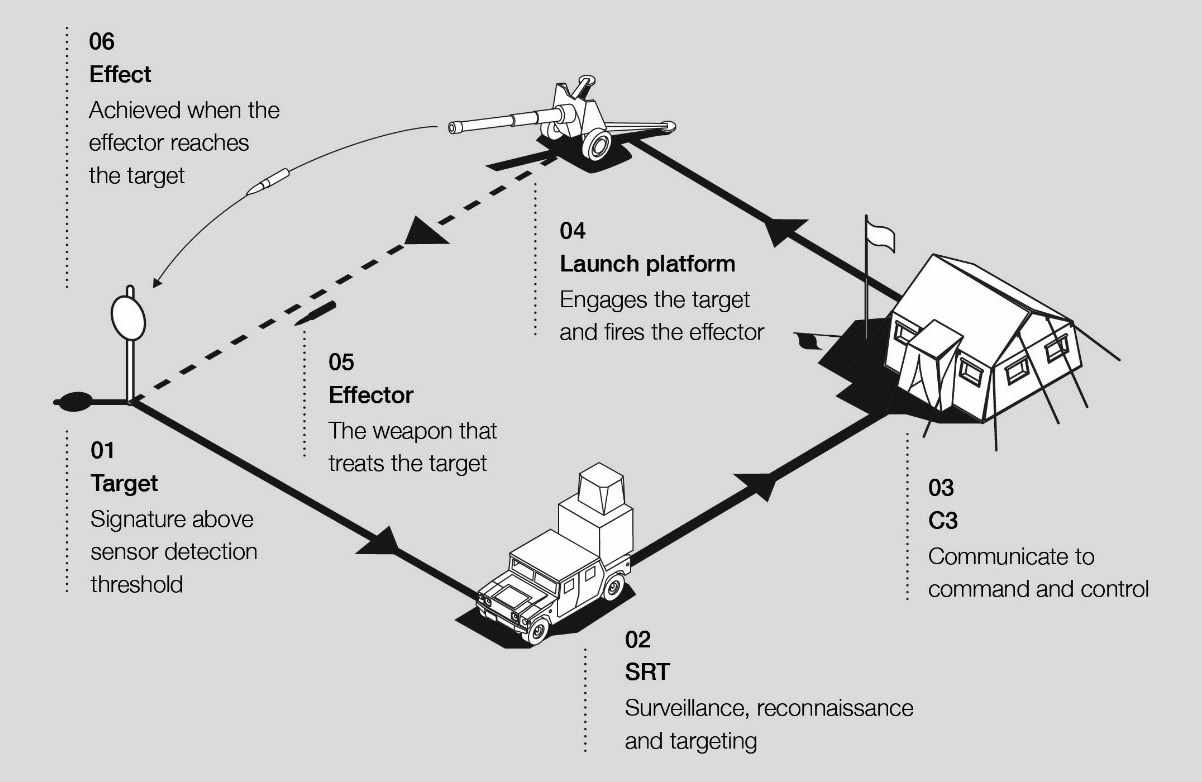 |
| Figure 2: Modern Field Artillery System Depiction 12 |
|
Over time, the importance of having the latest technology is continually demonstrated by the complexity of the artillery systems used, resulting in an increased requirement for technical and tactical training of RAA personnel. The Australian Army’s Artillery Modernisation Plan aims to upgrade the technology the RAA uses to solve the twenty-first century version of the Gunnery Problem, in order to fulfil its purpose.
ARTILLERY MODERNISATION PLAN
The Artillery Modernisation Plan (AMP) is a twenty-year capability development framework to ensure the acquisition, introduction and disposal of new major systems are tied to or aligned with changes to organisational structures, personnel trades and training delivery. It encompasses two broad time periods of 2020–2030 and 2030–2040. Essentially, the 2020-2030 epoch’s focus will be on introducing new capability for the RAA, while the 2030 – 2040 epoch’s focus will be on upgrading and improving the systems to ensure the RAA’s effectiveness into the future. This paper will focus on the first epoch.13
There are six major projects currently being managed to deliver modernised weapons platforms and sensors to the RAA:
- Protected Mobile Fires - Self-propelled artillery;
- Long Range Fires – Long-range multiple launch rocket and missile systems;
- Improved ammunition (guidance, firing, range);
- Short Range Ground Based Air Defence (SR-GBAD) - Air and missile defence;
- Tactical Unmanned Aerial Vehicle Enhancements/Upgrades – Unmanned Aerial Systems; and,
- Digital Terminal Control System – Ability to coordinate targeting information from the latest platforms operating in the air, maritime and land.14
| 1. | Floyd, N. LTCOL, ‘A reflection on Australian Artillery – 1871 to 2021,’ The COVE, 13 August 2021. |
| 2. | 'LWP 3-4-1, Employment of Artillery,’ Australian Army, 2009, Section 1-1, para 1.1. |
| 3. | Australian Defence Glossary, accessed on 04 December 2021, available at: https://www.adg.dpe.protected.mil.au |
| 4. | 'LWP-CA (STA) 2-3-2 Surveillance and Target Acquisition,’ Australian Army, 27 August 2019, Section 1-1, para 1.2. |
| 5. | ‘LWP-CA (STA) 2-3-2 Surveillance and Target Acquisition,’ Australian Army, 27 August 2019, Section 3-1. |
| 6. | A UAS comprises a remotely piloted aircraft, the launch and recovery system, the command, control and communications system, the ground controller and the information it disseminates. Australian Defence Glossary, accessed on 04 December 2021, available at: http://adg.dpe.protected.mil.au/ |
| 7. | ‘Employment of Artillery in War’, Principles of Employment, Chapter VII, Section 145, Field Artillery Training Pamphlet 1914, His Majesty’s Stationery Office London 1914, para 1. |
| 8. | ‘Royal Regiment of Australian Artillery,’ accessed on 25 November 2021, available at: https://www.army.gov.au/our-people/organisation-structure/army-corps/royal-regiment-australian-artillery. |
| 9. | Joint Fires: The use of weapon systems to create lethal or non-lethal effects on a target in a coordinated action, to produce these desired effects in support of a common objective. Australian Defence Glossary, accessed on 04 December 2021, available at: https://www.adg.dpe.protected.mil.au |
| 10. | Joint Fire and Effects: The co-ordination and administration of all forms of offensive support. Australian Defence Glossary, accessed on 04 December 2021, available at: https://www.adg.dpe.protected.mil.au |
| 11. | Floyd, N. LTCOL, ‘A reflection on Australian Artillery – 1871 to 2021,’ The COVE, 13 August 2021, pp 7-8. |
| 12. | Department of Defence, ‘Artillery Modernisation Plan (Draft),’ Australian Army, undated, accessed 04 December 2021. p. 2. |
| 13. | Department of Defence, ‘Artillery Modernisation Plan (Draft),’ Australian Army, undated, accessed 04 December 2021. |
| 14. | Department of Defence, ‘Artillery Modernisation Plan (Draft),’ Australian Army, undated, accessed 04 December 2021. |
PROTECTED MOBILE FIRES – SELF PROPELLED ARTILLERY
The role of field artillery is to provide timely and accurate indirect fire support.1 This fire support is provided through the following field artillery tasks or fire mission profiles:
- Suppression;2
- Neutralisation;3
- Destruction;4
- Harassment;5
- Illumination;6
- Interdiction;7
- counter-battery fire (CBF);8
- coordination of fires.9
| LAND 8116-1 Protected Mobile Fires. |
| This project will introduce a protected and mobile 155mm artillery platform to the preparedness system. It will be able to support the ADF’s manoeuvre system of armoured vehicles, providing rapid lethal fires while conducting counter battery fires against threat artillery systems. It will provide a domestic manufacturing and maintenance capability to the support system with heavy grade repair being conducted from the Geelong region. This capability will realise changes to existing employment categories10 and simulation systems within the people system.11 12 |
| LAND 8116–3 Protected Mobile Fires (Capability Assurance Program). |
| This option seeks to update hardware and software of the ADF’s protected mobile fires capability, delivered under phases 1 and 2 (an additional Regt), to ensure that it remains a capable, up to date eapons system. It will ensure that the latest ammunition and communications systems are included, allowing the protected mobility fires units to remain a key part of the integrated Joint Force. This option will enhance the Joint Capability Effect of Land Control.13 14 |
AUSTRALIA: Hanwha - Huntsman
Image: Hanwha Huntsman 155mm SPH (courtesy ADM)15 - View Source
The aim of LAND 8116 is to provide “a tracked mobility, protection and firepower capability that can operate in medium to high intensity warfare in support of highly manoeuvrable armoured vehicles.” Under Phase 1 of the project, the Australian Government has entered into an agreement with South Korean company Hanwha to purchase 30 tracked self-propelled 155mm, 52-calibre howitzers, to be known as AS9 ‘Huntsman’, and 15 armoured ammunition resupply vehicles, 16 with this balance of provisioning reflecting the importance of ammunition replenishment.
There are four essential components to this system. The first is the weapon platform itself which fires the projectiles. The second is the ammunition resupply vehicle which connects to the back of the Huntsman so that ammunition transfer can occur with continued protection for the crews. The third component is a weapon-locating radar to ensure the accuracy of fire, and aids in survivability by detecting counter-battery fire.16 The fourth component is an armoured artillery command post vehicle, based on the ammunition resupply vehicle, with an interior workspace for 6-7 personnel. Its design means it could act as a forward command post and ground control station for artillery UAVs.17
The Huntsman is operated by five crew and fitted with an automatic shell-handling and ramming system, and is compatible with all standard NATO 155mm ammunition. It can achieve ranges out to 30 km, with a range out to 40km with rocket-assisted shells. It has a maximum rate of fire of six rounds per minute, and a sustained rate of two rounds per minute. The Huntsman is capable of multiple-round simultaneous-impact firing, meaning it can launch 3 rounds in 15 seconds, each at different trajectories, so that all of the shells arrive on target, at the same time.
The Huntsman takes 60 seconds to prepare for firing from traveling order. It is equipped with a nuclear, biological and chemical protection system, and has been reported that this weapon’s platform is the most protected howitzer in its class.18
The K-9 Thunder is currently in service with Turkey, Poland, Finland, India, Norway and Estonia.19
Image: AS10 Ammunition Resupply Vehicle (courtesy Military Today)20 - View Source
OTHER NATIONS: SELF-PROPELLED HOWITZER SYSTEMS
UNITED STATES OF AMERICA: BAE Systems - Paladin
Image: BAE Systems Paladin M109A6 (courtesy BAD Systems/Business Wire)21 - View Source
Developed from the M109A6, the BAE Systems Paladin M109A7 is an armoured, self-propelled 155mm, 58-calibre howitzer, with a range of 24km using unassisted rounds or 30km using assisted rounds. The Paladin achieves a maximum firing rate of up to eight rounds a minute, or three rounds in 15 seconds and a sustained firing rate of one round every three minutes. The Paladin is complemented by the M992A3 ammunition carrier. Paladin is in service with US Army, and was used in support of Operation Iraqi Freedom in March-April 2003, and later in ongoing operations in Iraq and
Afghanistan.22
Image: M109A6 Live Firing (courtesy BAE Systems/Business Wire)23 - View Source
PEOPLE’S REPUBLIC OF CHINA: China North Industries Group Corporation - PLZ-05
Image: PLZ-05 155mm SPH (courtesy Army Recognition24 - View Source
The PLZ-05 is an armoured, tracked, self-propelled 155mm 52- or 54-calibre howitzer, with a range of 30km with rocket assisted projectiles out to 39km. The PLZ-05 has a maximum rate of fire of 8–10 rounds per minute. The PLZ-05 entered service in 2008 and the Chinese military has nearly 300 platforms.25
Image: PLZ-05 155mm SPH (courtesy Military Today26 - View Source
FEDERAL REPUBLIC OF GERMANY: Krauss-Maffei Wegmann – Panzerhaubitze (PzH) 2000
Image: KMW PzH 2000 155mm SPH (courtesy Military Today)27 - View Source
The KMW PzH 2000 is a German-made armoured, tracked self-propelled 155mm, 52-calibre howitzer. It has a crew of five and an automatic loading system which can load 60 shells and propelling charges in 12 minutes. Its maximum unassisted range is 30km, and can reach 40km with assisted rounds. The maximum rate of fire in burst mode is three rounds in 9 seconds, or 12 rounds in one minute. It has a continuous rate of fire of 10 -13 rounds per minute. The PzH 2000 can fire 5 rounds with simultaneous impact.
Self-Propelled Artillery
Self-propelled platforms have a slight range advantage over comparative towed artillery platforms, but also the advantage of being operated by a smaller, better-protected crew that can reload and fire at an improved rate.
The RAA’s modernisation to self-propelled artillery will allow it to better support armoured assets in a peer-to-peer battle. These new systems are protected, more mobile, and able to employ ‘shoot-and-scoot’ tactics to improve survivability from counter-battery fire. They also allow continual fire support to be given to mechanised units as they advance at pace. They will enable the development of new tactics, techniques and procedures. For example, one Huntsman with its multiple-launch, simultaneous-impact firing ability, can now provide what traditionally would require 3 guns, or half a battery. This means three Huntsmen could deliver a weight of fire that traditionally would have required one and a half batteries, but with a lot less communication and co-ordination.
| 1 | ‘LWD 3-4-1, Employment of Artillery,’ Australian Army, 2009, Section 1-2, para 1.6. |
| 2 | Suppression: An actual or suspected adversary weapons system's performance is temporarily or transiently degraded below the level needed to fulfil its mission objectives at a specific time for a specified duration. See Australian Defence Glossary [citation details – accessed 21 06 2022] |
| 3 | Neutralisation: To degrade or negate an adversary's capabilities to such an extent that it is rendered ineffective. See Australian Defence Glossary [citation details – accessed 21 06 2022] |
| 4 | Destruction: Sufficient damage of an adversary state or non-state adversary that it is unable to return to conflict. See Australian Defence Glossary [citation details – accessed 21 06 2022] |
| 5 | Harassment: Disruption of the enemy by impeding movement, impeding supply and forcing redeployment due to being fired upon by artillery assets. See ‘LWD 3-4-1, Employment of Artillery,’ Australian Army, 2009, Section 1-4, para 1.18. |
| 6 | A type of fire in which illuminating projectiles are fired at to provide lighting on the target or specified area. See Australian Defence Glossary [citation details – accessed 21 06 2022] |
| 7 | Interdiction: Actions to divert, disrupt, delay or destroy the adversary before they can affect friendly forces. See Australian Defence Glossary [citation details – accessed 21 06 2022] |
| 8 | Fire delivered for the purpose of destroying or neutralising the enemy's fire support system. See Australian Defence Glossary [citation details – accessed 21 06 2022] |
| 9 | Co-ordination of fires: Co-ordination of all the different units and elements that can fire a projectile onto a target. See ‘Section 1-4. Tasks,’ LWD 3-4-1, Employment of Artillery, 2009. P. 1-4. |
| 10 | Employment Categories: Each different job role or trade has a job number associated with it. This outlines the skills and tasks that a soldier needs to be assessed as proficient in. These skills will be specific to the part that soldier plays in a particular unit in a particular corps. |
| 11 | People System: The interrelated elements that make up the human resources function of the Australian Defence Force. |
| 12 | Previously released open source artefacts provided by Joint Fires – Army, Combat Support Program, July 2021 |
| 13 | Joint Capability Effect of Land Control: The breadth of effects the ADF delivers in order for the employment of land forces to control vital land areas. Australian Defence Glossary, accessed on 04 December 2021, available at: http://adg.dpe.protected.mil.au |
| 14 | Previously released open source artefacts provided by Joint Fires – Army, Combat Support Program, July 2021 |
| 15 | Pittaway, Nigel, Huntsman – Australia’s lethal arachnid, Australian Defence Magazine, accessed14 Feb 2022. |
| 16 | Bergman, K. ‘2020 Force Structure Plan a Major Boost to Army’s Combat Power,’ Asia Pacific Defence Reporter, September 2020 available at: https://asiapacificdefencereporter.com/wp-content/uploads/2020/09/APDR_Sept_2020__Interactive.pdf. |
| 17 | AS9 Huntsman, 155mm self-propelled howitzer,’ Military Today, accessed on 13 January 2022, available at: AS9 huntsman Self-Propelled Howitzer | Military-Today.com |
| 18 | AS9 Huntsman, 155mm self-propelled howitzer,’ Military Today, accessed on 13 January 2022, available at: AS9 huntsman Self-Propelled Howitzer | Military-Today.com |
| 19 | K-9 Thunder Self-Propelled Howitzer, Hanwha Defence Website, accessed on 10 February 2022, available at: K9 Thunder Self-propelled Howitzer | Artillery Systems | Our Business | Hanwha Defense (hanwha-defense.co.kr) |
| 20 | AS10 Ammunition Resupply Vehicle,’ accessed on 13 January 2022, available at: http://www.military-today.com/artillery/as9_huntsman_l3.jpg |
| 21 | ‘Paladin M109A6 155mm Artillery System,’ accessed on 14 Oct 2021, available at: https://www.army-technology.com/wp-content/uploads/sites/3/2000/10/Paladin-1.jpg |
| 22 | ‘Paladin M109A6 155mm Artillery System,’ Army Technology, accessed on 14 Oct 2021, available at: https://www.army-technology.com/projects/paladin/. |
| 23 | ‘Paladin M109A6 155mm Artillery System live firing’, accessed on 14 Oct 2021, available at: https://www.army-technology.com/wp-content/uploads/sites/3/2000/10/Paladin-2.jpg |
| 24 | ‘PLZ-05 155mm Self-propelled tracked howitzer, accessed27 April 2022, available at: https://www.armyrecognition.com/images/stories/asia/china/artillery_vehicle/plz-05/PLZ-05_PLZ05_155mm_self-propelled_howitzer_tracked_armoured_vehicle_Chinese_Army_PLA_China_left_side_view_001.jpg |
| 25 | PLZ-05 155 mm Self-propelled howitzer,’ Military Today, accessed on 15 Oct 21, available at: PLZ-05 155 mm Self-Propelled Howitzer | Military-Today.com |
| 26 | ‘PLZ-05 155 mm Self-propelled howitzer,’ accessed on 15 Oct 21, available at: http://www.military-today.com/artillery/plz05_l3.jpg |
| 27 | ‘PzH 2000 155mm Self-Propelled Howitzer,’ accessed on 01 February 2022, available at: https://www.army-technology.com/wp-content/uploads/sites/3/2017/09/PzH2000_11.jpg |
LONG-RANGE FIRES – SURFACE-TO-SURFACE ROCKETS AND MISSILES
The 2020 Defence Strategic Update outlines the importance long-range fires has in ensuring the objective of “connected, protected, lethal and enabled” land forces. The Update outlines that “long-range lethality will be strengthened through additional long-range rocket systems” and ‘enhanced missile development.’1 Currently there is no land-based long-range missile platform in ADF service. The ADF’s only long-range missile strike capability is the AGM-158 Joint Air-to Surface Strike Munition (JASSM) carried by the RAAF, which has a range out to 370 km.2
The Army, through the Artillery Modernisation Plan (AMP), seeks to rectify this by acquiring a long-range strike missile capability. With the addition of sensors and co-ordination with the other services, Australia is creating what is known as an ‘anti-access and area-denial’ system (A2AD). This is of enormous significance for the Army and shifts its place in the hierarchy of the nation’s defence. Dr Albert Palazzo in an Occasional Paper written for the Army notes that contemporary missiles are available with ranges in excess of 2,000 kilometres. The platforms are easily deployable or can be mounted on a ship.3
Army through the RAA will thus be actively engaging in ‘deep’ battle beyond the immediate tactical fight. This opens up a larger and extended range of targets. This will require a change to how the RAA finds, identifies and track targets for passing on to long-range fire assets, and how command and control selects and choses the priority of targets to engage.
LAND 8113 Long Range Fires. |
This project will introduce a rocket and missile artillery capability to the preparedness system that will be capable of engaging targets beyond 500km. The launcher system will be highly mobile, rapidly deployable and be capable of incorporating technological updates in the future, such as robotics and automation. 4 |
LAND 8113 Long Range Fires Future Phases (Including Enhanced Munitions). |
This option seeks to provide a spiral munitions upgrade5 for the long-range offensive support system selected under Land 8113. It will enhance the Joint Capability Effect of Land Control by providing accuracy and range enhancements. Options will also be considered to build on the size of the capability delivered under phase 1. 6 |
One of the capabilities that the AMP is looking to reintroduce is weapon-locating radars.7 Both the Protected Mobile Fires and Long Range Fires projects will re-introduce weapon locating radar capabilities in the RAA to support Land and Joint operations. These radars locate hostile artillery, mortars and rocket launchers, as well as track friendly fire to locate the impact point of friendly artillery fire to provide necessary corrections. The radar is designed to detect projectiles with small cross-sections across the battlespace, and can handle simultaneous fire from weapons deployed in multiple locations. This renewed capability will feed into the identification and tracking of targets for the command and control elements to prioritise, or for the observer to create targeting data.8
OTHER NATIONS: LONG-RANGE FIRES SYSTEMS
UNITED STATES OF AMERICA: Lockheed Martin - High Mobility Artillery Rocket System (HIMARS)
Image:High Mobility Artillery Rocket System (courtesy Military.com)9 - View Source
The M142 HiMARS Rocket Launcher is a six-wheeled, protected, precision fire launcher that is operated by a 3-person crew from the cabin of the launcher vehicle. It is C-130 Hercules transportable, and can be fitted with the Guided Multiple Launch Rocket System (GMLRS) which has 6 missiles able to fire out to 70km with the extended range version having a range of 150km.
Image: High Mobility Artillery Rocket System (courtesy Military.com)10 - View Source
Alternatively, it can be configured with Precision Strike Missile (PrSM) systems, which has two missiles that have a range in excess of 500km. Currently Lockheed Martin have delivered more than 400 HIMARS launchers.11
RUSSIAN FEDERATION: NPO Splav – 9A52-4 Tornado
Image: NPO Splav - 9A52-4 Tornado (courtesy Wikipedia)12 - View Source
The 9A52-4 is an eight-wheeled, protected, multiple launch rocket system that has a range out to 90km. It is fitted with a single container of six, 300mm rocket launching tubes. It can fire all current Smerch13 rockets, including HE-FRAG, incendiary, fuel-air explosive, and cluster with anti-personnel or anti-tank mines. Cluster rounds may also carry self-targeting anti-tank munitions.
Image: NPO Splav - 9A52-4 Tornado (courtey Russia Defence Forum)14 - View Source
A crew of two prepares the system for firing within 3 minutes, from the cabin. The launch vehicle is fitted with automated laying and fire control system. It is also fitted with autonomous satellite navigation and positioning system. A launch vehicle exchanges positioning and firing data with a command vehicle, and rockets can be launched directly from the cab, or remotely from the vehicle. The 9A52-4 can launch a single rocket, several of them, or a full salvo that has a duration of 20 seconds, and be reloaded within 8 minutes.15
FEDERAL REPUBLIC OF GERMANY: Krauss-Maffei Wegmann (KMW) - MARS II
Image: KMW Mars II (courtesy KMW) 16 - View Source
The Medium Artillery Rocket System (MARS) II is an armoured, tracked, multiple rocket-launcher, served by a crew of 3, which can achieve ranges greater than 70km. It has one rocket launcher with 12 tubes, and can achieve a rate of fire of 12 rockets in 60 seconds.
MARS II is the upgraded version of the M270 MLRS which was jointly developed by the United Kingdom, United States, West Germany, France and Italy in 1983. It has an electric laying system which enables rapid laying, and reduces maintenance and repair effort compared to hydraulic systems. The MARS II can fire unguided rockets as well as UNITARY and SMArt precision rounds.17
Image: KMW Mars II (courtesy Military Leak)18 - View Source
Long Range Fires Options
The above examples demonstrate that there is currently a range of proven artillery rocket systems that have been battle-tested by coalition partners. Australia would benefit from acquiring systems that are in a mature phase of their development, and ideally, allow interoperability with allied countries. This will enhance Australia’s ability to influence and effect the ‘deep’ battle, adding to the ADF’s joint fires and effects options.
| 1 | Department of Defence, 2020 Defence Strategic Update, 01 July 2020, p. 39. |
| 2 | Axe, D. ‘Australia’s Huge New Weapons Buy Will Give It Long-Range Strike Ability For First Time Since F-111 Bombers,’ Forbes, 21 September 2021., available at: Australia’s Huge New Weapons Buy Will Give It Long-Range Strike Ability For First Time Since F-111 Bombers (forbes.com) |
| 3 | Palazzo, A. ‘Planning not to Lose: The Australian Army’s New Philosophy of War,’ Australian Army Occasional Paper No. 3, 2021. P. 38. |
| 4 | Previously released open source artefacts provided by Joint Fires – Army, Combat Support Program, July 2021 |
| 5 | Spiral Munitions Upgrade: The spiral development model is a risk-driven process model generator. It is used to guide multi-stakeholder concurrent engineering of software intensive systems. It has two main distinguishing features. One is a cyclic approach for incrementally growing a system's degree of definition and implementation while decreasing its degree of risk. The other is a set of anchor point milestones for ensuring stakeholder commitment to feasible and mutually satisfactory system solutions. Boehm, B. ‘Spiral |
| 6 | Previously released open source artefacts provided by Joint Fires – Army, Combat Support Program, July 2021 |
| 7 | Weapon Locating Radar: Radars that can detect and locate enemy artillery units by tracking the trajectory of incoming rounds. Australian Defence Glossary, accessed on 04 December 2021, available at: http://adg.dpe.protected.mil.au/ |
| 8 | ‘Weapon Locating Radar,’ Defence Research and Development Organisation, accessed on 13 January 2021, available at: Weapon Locating Radar (WLR) | Defence Research and Development Organisation - DRDO, Ministry of Defence, Government of India |
| 9 | ‘M142 HIMARS,’ accessed on 12 November 2021, available at: |
| 10 | ‘M142 HIMARS,’ accessed on 12 November 2021, available at: |
| 11 | ‘Fast Facts – High Mobility Artillery Rocket System’, Lockheed Martin website, accessed on 12 November 2021, available at: https://www.lockheedmartin.com/content/dam/lockheed-martin/mfc/documents/himars/TSM-Fast-Facts-HIMARS.pdf; ‘M142 HIMARS,’ Military.com, accessed on 12 November 2021, available at: M142 HIMARS | Military.com. |
| 12 | ‘9A52-4 Tornado Multiple Rocket Launch System,’ Military Today, accessed on 17 Nov 21, available at: 9A52-4 Tornado - Wikipedia. |
| 13 | SMERCH: The 9K58 SMERCH 300mm Multiple Launch Rocket System (8x8 wheeled truck chassis), was designed by Russia and entered service in 1988. The SMERCH fires 300mm 9M55k rocket that has a range from 20 – 70km. ‘Smerch 9K58 MLRS Multiple Rocket System,’ Army Technology, 03 May 2000, accessed on 10 February 2022, available at: https://www.army-technology.com/projects/smerch/ |
| 14 | ‘9A52-4 Tornado Multiple Rocket Launch System,’ accessed on 17 June 22, available at: https://upload.wikimedia.org/wikipedia/commons/4/45/Combat_vehicle_9A52-4_Smerch_MLRS_(3).jpg . |
| 15 | ‘9A52-4 Tornado Multiple Rocket Launch System,’ Military Today, accessed on 17 Nov 21, available at: 9A52-4 Tornado Multiple Launch Rocket System | Military-Today.com. |
| 16 | ‘MARS II/MLRS-E – Medium Artillery Rocket System,’ accessed on 17 November 2021, available at: https://www.kmweg.com/fileadmin/user_upload/fce/gallery/Mars-KMW-004.jpg |
| 17 | ‘MARS II/MLRS-E – Medium Artillery Rocket System,’ KMW Website, accessed on 17 November 2021, available at: MARS II / MLRS-E - KMW (kmweg.com) |
| 18 | KMW MARS II’, accessed on 17 November 2021, available at: https://i0.wp.com/militaryleak.com/wp-content/uploads/2020/07/MARS-II.jpg?w=1000&ssl=1 |
FUTURE AMMUNITION
It is a long-held maxim that ‘the weapon of artillery is the projectile’, and indeed this focus remains true in principle across all forms of artillery. Regardless of the artillery delivery system, the potency of the projectile (or the effect delivered by that system) is paramount. What gives this potency a truly strategic advantage is reach. If a combat force can influence the ‘deep battle’, this not only delivers lethal effects onto opposing combat troops, including engaging in counter-battery fire; it also constrains adversary considerations for siting rear logistics and higher headquarters locations, creating extra imposts in distance and time in transit between combat units and these locations, while remaining out of range of the adversary.
In the realm of field artillery, the ammunition projectile is constantly in evolution to improve the characteristics of range, accuracy, precision and terminal effect. Precision is enabled both through on-board guidance systems in the projectile, but equally, ongoing improvements in firing calculations and consistency within delivery systems, as well as more accurate and longer distance targeting technology. Together, these deliver unprecedented degrees of precision in modern unguided munitions.
| LAND 17-1C.2 Future Artillery Ammunition |
This project will increase the range, improve the effects available to the preparedness system and provide more insensitive munitions (IM) compliant natures. It will provide a secondary source of ammunition supply to the support system with opportunities for domestic manufacture, which in turn will increase supply line assurance.1 |
| LAND 8110-1 Future Artillery Ammunition Replacement |
The Phase 1 Future Artillery Ammunition Replacement Program will introduce into service for the ADF modern explosive ordnance natures to optimise the 155mm Indirect Fire System, with a particular focus on Artillery Precision Guided Munitions (APGM). The future ammunition system will have reduced vulnerability in storage, transportation and operational use. It will also have improved range and a greater variety of lethal and non-lethal effects. LAND 8110 Phase 1 particularly supports Joint Fires and Effects in Land Combat Operations.2 |
| LAND 8115 1 Mortar Ammunition Replacement |
LAND 8115 will procure 60 mm and 81 mm ammunition, including high-lethality and IM compliant natures. The later will deliver a similar effect as a 120 mm round, achieving greater target effects whilst reducing the number of rounds required per target. It is expected that the ADF will gain access to sufficient data to inform a future purchase, and potentially incorporate the data into future domestic production. Included in the project is an 81 mm practice round load-assemble-package (LAP) activity to confirm the viability of local assembly of practice rounds based on stockpiled components.3 |
Until recently, the range that artillery weapon systems could achieve had not radically changed since the end of World War I. Currently, there are multiple companies seeking to improve the range, effects and accuracy of ammunition across several weapons platforms.
OTHER NATIONS: AMMUNITION MANUFACTURERS
RHEINMETALL – Germany
Image: DM-52-21 gun fires 155mm Very Long Artillery Projectile 67 km (courtesy RDM)4 - View Source
Rheinmetall5 is currently focusing on achieving an enhanced range 155mm artillery round fitted with a precision guidance kit, as well as on developing a new 155mm projectile with an improved integrated propulsion system. Rheinmetall’s Velocity Enhanced Long-Range Artillery Projectile (V-LAP) round achieves a range of 76km, which is the longest range of a conventional artillery projectile.6 The unique projectile design enables simultaneous use of rocket propellant, using specially designed nozzles and base-bleed charges.7
Image: 155mm HE ERFB RA/BB (VLAP) projectile (courtesy Yugolmport)8 - View Source
NAMMO – Norway
Image: Illustration showing 155mm artillery shell (courtesy Nammo)9 - View Source
Nammo10 is a provider of specialty ammunition and rocket motors. With their 155mm ammunition series, Nammo offers base-bleed enhanced rounds and rocket-assisted shells, and are in the process of developing a Ramjet-powered shell. The latter munition presents massive potential, as Nammo claim they can reach farther than any other 155mm round in production, with a range of up to 100km.11 -
A solid-fuel Ramjet-powered shell works by using the force of the launch to get the round moving fast enough to start the ramjet motor. The solid fuel source then propels the projectile up to a maximum speed of Mach 3 and keeps it moving at that speed for approximately 50 seconds. This type of motor has the added benefit of reducing drag on the shell itself, since it actively ‘pulls’ the projectile through the air.12
The NAMMO 40km-capable 155mm HE-ER has been chosen by Finland for its K9 Thunder platform,13 meaning it could be used by the Huntsman when it enters service.
Image: Diagram of 155mm Solid Fuel Ramjet (courtesy Indian Defence News)14 - View Source
RAYTHEON TECHNOLOGIES– United States of America
Image: M982 Excalibur Guided artillery shell (courtesy Military Today)15 - View Source
Raytheon16 is known for its extended-range, precision munition named Excalibur. This projectile provides accurate first-round effects at all ranges in all weather conditions. It has a reach out to 50km, and impacts at a radial ‘miss distance’ of less than two metres from a target. US Army analysis has shown it can require at least 10 conventional munitions to accomplish what one Excalibur round can.17
Excalibur projectiles employ Global Positioning System (GPS)-aided inertial guidance and navigation (INS), free spinning base fins, four-axis canard airframe control, base bleed technology, and a
trajectory glide to achieve increased accuracy and extended ranges.18 The programmable guidance system allows a field artillery detachment to set the Excalibur to strike a specific geographic location.19
Raytheon are currently developing the Excalibur S; this builds on the earlier variant’s use of GPS guidance by adding a toughened digital semi-active laser seeker. After launch, the shell follows GPS guidance until it detects the laser energy from a designator that operators use to point out a target. This means the system can engage targets when exact co-ordinates are not readily available, with a reduced chance of the flight path being blocked by radar-jamming devices. More importantly, it means that artillery systems can now engage moving targets.20
In May 2020, Raytheon announced that it was working with NAMMO to build an Excalibur round with a ramjet engine and stated that it will be able to strike moving and stationary high-value targets on land and at sea, while being compatible with legacy and future 155mm artillery systems. The projectile will most likely feature some form of multi-mode guidance, such as using GPS-INS to get to the target area and then switching over to a combination of millimetre-wave radar or imaging infrared to find and then strike the target.21 - View Source
Image: Diagram showing flight profile of a notional XML155mm shell (courtesy US Army)22 - View Source
FUTURE AMMUNITION
These new ammunition technologies will allow the ADF to hit targets at ranges almost triple what was capable in World War I. This allows field artillery to influence more of the battlespace, and improves their survivability by being able to be located further from the front line. It also allows artillery units to support more units over a broader area, and reduces the time they are unable to fire while moving to follow-on locations to keep pace with the movement of the supported mechanised force. It also aids in field artillery survivability, as the units will have an increased range from which to engage in counter-battery fire.
Integrating these rounds with improved guidance systems improves first-round accuracy, which ensures less collateral damage, with a lower cost and smaller logistics requirement. By having this capability, field artillery can contribute to the ADF’s joint fires by delivering effects on a target that currently only the Air Force could achieve, freeing up those resources and allowing the ADF to project deeper into the battlespace.
These new ammunition natures will also change artillery tactics. Whereas traditionally field artillery was used for engaging fixed targets, or disrupting the movement of enemy forces, moving targets can now be engaged. This will enhance artillery’s lethality against manoeuvre formations, and its ability to transform the shape of battlefields.
| 1 | Previously released open source artefacts provided by Joint Fires – Army, Combat Support Program, July 2021 |
| 2 | Previously released open source artefacts provided by Joint Fires – Army, Combat Support Program, July 2021 |
| 3 | Previously released open source artefacts provided by Joint Fires – Army, Combat Support Program, July 2021 |
| 4 | DM-52-2l gun fires 155mm VLAP, 27 November 2019, available at: https://www.defense-update.com/wp-content/uploads/2019/11/Rheinmetall-RDM_1021-696x444.jpg |
| 5 | Rheinmetall is a German company founded in 1889. In February 2021 its South African subsidiary, Rheinmetall Denel Munition, signed a ten-year strategic partnership with Northrop Grumman for precision-guided enhanced range artillery ammunition. |
| 6 | Hoffman, O. ‘Rheinmetall and Northrop Grumman agree to strategic partnership for precision-guided enhanced range artillery ammunition,’ Rheinmetall Company Website, 19 April 2021, available at: Rheinmetall Defence - Latest news Rheinmetall and Northrop Grumman agree to strategic partnership for precision-guided enhanced range artillery ammunition (rheinmetall-defence.com) |
| 7 | ‘155mm HE ERFB RA/BB very long range artillery projectile (VLAP-Rocket Assistance/Base Bleed),’ YUGOIMPORT, accessed on12 January 2022, available at: 155 mm HE ERFB RA/BB very long range artillery projectile (VLAP-Rocket Assistance/Base Bleed) | SDPR - Yugoimport |
| 8 | ‘155mm HE ERFB RA/BB very long range artillery projectile (VLAP-Rocket Assistance/Base Bleed),’ YUGOIMPORT, accessed on12 January 2022, available at: https://www.yugoimport.com/sites/default/files/2_12.jpg |
| 9 | ‘155mm artillery shell and range options,’ accessed on 08 Jan 2022, available at: https://www.nammo.com/wp-content/uploads/2020/05/artillery-graphic-1536x1087.jpg |
| 10 | Nammo is an international aerospace and defence company headquartered in Norway. It was formed in 1998 through a merger of the ammunition businesses in Norway, Sweden and Finland and has more than 100 years of experience. See ‘About Us,’ NAMMO Company Website, accessed on 08 Jan 2022, available at: About us - Nammo | Nammo |
| 11 | ‘155mm-series,’ NAMMO Company Website, accessed on 08 Jan 2022, available at: 155 mm-series - Nammo | Nammo |
| 12 | Trevithick, J. “Yes, This Is A Ramjet Powered Artillery Shell And It Could Be A Game Changer,’ The War Zone, 14 June 2018, available at: Yes, This Is A Ramjet Powered Artillery Shell And It Could Be A Game Changer (thedrive.com) |
| 13 | ‘The range revolution,’ NAMMO Company Website, accessed on 08 Jan 2022, available at: The range revolution - Nammo | Nammo |
| 14 | ‘Diagram of 155mm Solid Fuel Ramjet artillery shell,’22 February 2022, available at: https://1.bp.blogspot.com/-vGGamoDp8a4/XlDC5pFKeII/AAAAAAACgKE/pc8ix4z9LaIWygWTAsT7ZLPGSI8qaVgvQCLcBGAsYHQ/s1600/IIT-Madras_Ramjet_Missile_Shell_Details.jpg |
| 15 | ‘M982 Excalibur,’ accessed on 12 January 2022, available at: http://www.military-today.com/artillery/m982_excalibur.jpg |
| 16 | Raytheon is an American company that started off in its original form in 1922 |
| 17 | ‘Excalibur Projectile,’ Raytheon Missiles and Defense Company Website, accessed on 12 January 2022, available at: Excalibur Projectile | Raytheon Missiles & Defense (raytheonmissilesanddefense.com) |
| 18 | ‘XM982 Excalibur – Precision Guided Extended Range Artillery Projectile,’ Global Security.Org, accessed on 12 January 2022, available at: XM982 Excalibur 155mm Precision Guided Extended Range Artillery Projectile (globalsecurity.org) |
| 19 | ‘M982 Excalibur,’ Military Today, accessed on 12 January 2022, available at: M982 Excalibur Extended-Range GPS-Guided Projectile | Military-Today.com |
| 20 | ‘Changing Course – Precision-Guided Excalibur Munitions Hits Moving Targets,’ Raytheon Technologies Company Website, accessed on 12 January 2022, available at: Changing course - Precision-guided Excalibur munition hits moving targets | Raytheon |
| 21 | Trevithick, J. ‘Raytheon Is Developing A Ramjet Artillery Round For The Army’s New Super Howitzers,’ The Warzone, 12 May 2020, available at: Raytheon Is Developing A Ramjet Artillery Round For The Army's New Super Howitzers (thedrive.com) |
| 22 | Diagram of flight profile of notional XML 155mm shell, accessed 16 June 2021, available at: https://www.thedrive.com/content-b/message-editor%2F1589305425786-profile.jpg?auto=webp&optimize=high&quality=70&width=1920 |
GROUND BASED AIR DEFENCE
The role of ground-based air defence (GBAD) is to defeat or reduce the effectiveness of enemy offensive airpower.1 GBAD is an integral part of air, land and, in littoral cases, maritime battles. GBAD contributes to land forces manoeuvre by engaging hostile aircraft with missiles; collecting information for the ADF’s air battle management system (ABMS), and providing advice to commanders, their staff and units on the air threat and passive AD measures.2 GBAD units will often be tasked to defend vital assets or location against an air threat. These units will also be tasked to destroy any air asset. Aircraft are a valuable and scarce resource, so their destruction both protects friendly forces and allows unhindered movement over the battlefield, while weakening the adversary.3
The RAA is tasked to provide Short-Range (SR)-GBAD in support of ADF operations. Specifically, the RAA defends deployed forces and critical assets from air threats, and facilitates the integration and synchronisation of air and land effects. An integrated air and missile defence will be a core component of SR-GBAD, as will the ability to track and neutralise unmanned and autonomous systems.4
| LAND 19-7B Short Range Ground Based Air Defence (SR-GBAD) |
This project will introduce a modern SR-GBAD capability, able to protect the Joint land force5 and provide interoperability into the wider ADF Integrated Air and Missile Defence (IAMD) Systems6. It will introduce a highly mobile capability able to protect manoeuvre forces with advanced sensor systems able to contribute to the threat picture enabling Joint assets and land fires platforms.7 The advanced, highly technical nature of this project will require changes to existing training and simulation systems within the people system.8 |
AUSTRALIA: Kongsberg – Norwegian/National Advanced Surface to Air Missile System (NASAMS)
Image: NASAMS air defence system (courtesy Kongsberg)9 - View Source
The NASAMS is a distributed and networked medium- to long-range air-defence system. A typical unit comprises of a command post, an active 3D radar, a passive electro-optical and infrared sensor and a number of missile canister launchers. The system uses Advanced Medium-Range Air-to-Air Missiles (AMRAAM) and holds six missiles per Multi-Missile Launcher. The launcher supports firing of AIM-120 AMRAAM B/C5/C7, AMRAAM ER, and AIM 9-X Sidewinder Block II.10 The AMRAAM missiles will have a range of about 20 km.11
Image: Multi-Missile Launcher (courtesy Kongsberg)12 - View Source
OTHER NATIONS: GROUND BASED AIR DEFENCE SYSTEMS
RUSSIAN FEDERATION: Ulyanovsk Mechanical Plant - Pantsir S-1
Image: Pantsir-S1 (courtesy Vitaly V. Kuzmin/Wikimedia)13 - View Source
The Pantsir-S1 is an 8x8 truck-mounted, medium-range anti-aircraft gun and missile system. The system incorporates two 30mm cannons, and up to 12 missiles allowing it to engage up to four targets simultaneously. Its missions vary from intercepting tactical aircraft, precision-guided munitions and UAVs. It has been in service since 2003 and the latest upgraded models have a range out to 40km. It is currently operated by 13 countries, including Algeria, Brazil, Jordan, UAE and Vietnam.14
Image: Pantsir-S1 Weapon System (courtney Vitaly V. Kuzmin/Wikipedia)15 - View Source
UNITED KINGDOM: Matra BAE Dynamics – JERNAS / Rapier FSC
Image: Rapier FSC (courtesy Army Technology)16 - View Source
The Rapier FSC is a towed trailer launcher, short-range missile system. It is mounted with eight missiles and is able to fire two simultaneously, with a full reload carried out manually in 2 minutes. It is capable of engaging supersonic, low-level, high manoeuvrability aircraft, as well as UAVs, cruise missiles and rotary-wing aircraft.17 Rapier FSC has been in service since 1996 and has a range out to 8km, with a radar detection range in excess of 15km. It uses electro-optical tracking device and passive infra-red sensors, and is controlled by an operator at a weapon control terminal.18 Rapier FSC is currently operated by 11 countries, including Iran, Indonesia, UAE, Malaysia and Singapore.
Image: Rapier FSC firing (courtesy Missile Defense Advocacy)19 - View Source
ISRAEL: Rafael Advanced Defense Systems - SPYDER
Image: SPYDER Air Defence System (courtesy Military Today)20 - View Source
Named after the Python 5 and Derby missiles the system uses, the Surface-to-air Python and Derby (SPYDER) is a short- to medium-range, truck-mounted air defence system. It can be mounted on multiple truck chassis, with the short-range variant holding four missiles, and the medium-range variant holding eight. It is capable of engaging aircraft, helicopters, UAVs and precision-guided munitions.
SPYDER entered service in 2008; its short-range variant has a range out to 15km and ceiling of 30,000ft, while the medium-range variant has a range of 35km and a ceiling of 50,000ft. The radar unit has a range of 40km and can track up to 60 targets. A unit can be geographically dispersed up to 10km, and takes 5 minutes to be set up. Once this occurs, the first missile can be launched in 5 seconds. Countries with SPYDER currently in service include India, Georgia, Peru, Singapore and Vietnam.21
Image: SPYDER Surface-to-Air Launcher (courtesy Army Technology)22 - View Source
Ground-Based Air Defence
The outlined GBAD systems illustrate short- to medium-ranges of around 8 to 40km distance. The role these systems play is changing from traditional fast air and rotary-wing platforms to engaging UAVs and, in some cases, missiles. New technology has provided for these systems to be operated in all weather, day or night, with improved ability to identify, track and effect targets.
The latest GBAD systems also take advantage of the latest datalink technology, which allows GBAD units to have weapon systems geographically dispersed but still connected. This also allows the sensors to both receive and send data, adding to the wider air defence picture.
| 1 | ‘Section 1-2. Roles,’ LWD 3-4-1, Employment of Artillery, 2009. P. 1-3. |
| 2 | ‘Section 1-4. Tasks,’ LWD 3-4-1, Employment of Artillery, 2009. P. 1-7. |
| 3 | ‘Section 1-4. Tasks,’ LWD 3-4-1, Employment of Artillery, 2009. P. 1-7, 1-8. |
| 4 | Department of Defence, ‘Artillery Modernisation Plan (Draft),’ Australian Army, undated, accessed 04 December 2021 |
| 5 | Joint Land Force: Those units that fight the land battle, essentially the Australian Army. |
| 6 | ADF IAMD: This entails both the defence against conventional air threats, such as helicopters, unmanned aerial vehicles and balloons, as well as the defence against ballistic missiles and cruise missiles |
| 7 | Joint Assets and Land Fires Platforms: All those weapons systems that would draw from the threat picture to engage their targets. Australian Defence Glossary, accessed on 04 December 2021, available at: http://adg.dpe.protected.mil.au |
| 8 | Previously released open source artefacts provided by Joint Fires – Army, Combat Support Program, July 2021 |
| 9 | ‘NASAMS Air Defence System,’ and ‘Multi-Missile Launcher’, Kongsberg Company Website, accessed on 08 January 2022, available at: NASAMS Air Defence System - Kongsberg Defence & Aerospace |
| 10 | ‘NASAMS Air Defence System,’ and ‘Multi-Missile Launcher’, Kongsberg Company Website, accessed on 08 January 2022, available at: NASAMS Air Defence System - Kongsberg Defence & Aerospace. |
| 11 | ‘Surface Launched AMRAAM,’ Army Technology, accessed on 01 February 2022, available at: https://www.army-technology.com/projects/surface-launched |
| 12 | ‘Multi-Missile Launcher,’ Kongsberg Defence & Aerospace, accessed on 15 June 2022, available at: https://www.kongsberg.com/globalassets/kongsberg-defence--aerospace/2.1.-products/defence-and-security/integrated-air-and-missile-defence/nasams-air-defence-system/nasams-multi-missile-launcher/picture-2-missile-mix.jpg?w=750&quality=55&format=jpg |
| 13 | Pantsir-S1, accessed on 15 Jun 22, available at 800px-Pantsir-S1_SAM_at_Engineering_Technologies_2012.jpg (800×533) (wikimedia.org) |
| 14 | Missile Defense Project, "Pantsir S-1," Missile Threat, Center for Strategic and International Studies, May 4, 2017, last modified July 6, 2021, https://missilethreat.csis.org/defsys/pantsir-s-1/. |
| 15 | ‘Pantsir weapon system,’ Wikipedia, accessed on 8 January 2022, available at: Pantsir missile system - Wikipedia. The Pantsir-S1 Weapon System. In the centre is the EHF phased-array tracking radar. Two twin-barrel 2A38M automatic anti-aircraft guns and 12 ready to launch missile-containers each containing one 57E6-E command guided surface-to-air missile. |
| 15 | ‘Pantsir weapon system,’ Wikipedia, accessed on 8 January 2022, available at: Pantsir missile system - Wikipedia. The Pantsir-S1 Weapon System. In the centre is the EHF phased-array tracking radar. Two twin-barrel 2A38M automatic anti-aircraft guns and 12 ready to launch missile-containers each containing one 57E6-E command guided surface-to-air missile. |
| 16 | ‘Rapier FSC Air Defence System, accessed 16 June 2021, available at: https://www.army-technology.com/wp-content/uploads/sites/3/2001/02/Image-1-Rapier-missile-system.jpg |
| 17 | ‘RAPIER (FS’C’),’ Armed Forces Website, accessed on 8 January 2022, available at: British Army - Artillery - Rapier - Blindfire Tracking Radar - Armed Forces - a6a10 |
| 18 | ‘JENAS / Rapier FSC Air Defence System,’ Army Technology, 16 June 2021, available at: JERNAS / Rapier FSC Air Defence System - Army Technology (army-technology.com) |
| 19 | ‘RAPIER (FSC),’ accessed on 8 January 2022, available at: http://www.armedforces.co.uk/army/listings/rapier_missile_a.jpg |
| 20 | ‘SPYDER Short- and medium-range air defense missile system,’ accessed on 8 January 2022, available at: http://www.military-today.com/missiles/spyder_l1.jpg |
| 21 | Tchkuaseli, Z. ‘SPYDER Short- and medium-range air defense missile system,’ Military Today, accessed on 8 January 2022, available at: SPYDER Air Defense Missile System | Military-Today.com ; SPYDER Surface-to-Air Launcher for Python 5 and Derby Missiles,’ Army Technology, 10 November 2021, accessed at: SPYDER Surface-to-Air Launcher for Python 5 and Derby Missiles - Army Technology (army-technology.com) |
| 22 | ‘SPYDER Surface-to-Air Launcher for Python 5 and Derby Missiles,’ 10 November 2021, accessed 16 June 2022, available at: https://www.army-technology.com/wp-content/uploads/sites/3/2004/04/Image-1-SPYDER-Surface-to-Air-Launcher-for-Python-5-and-Derby-Missiles.jpg. |
SURVEILLANCE AND TARGET ACQUISITION
The role of surveillance and target acquisition (STA) is to conduct systematic surveillance and accurate target acquisition and targeting in order to enable field artillery to provide fire support.1 STA systems combine the means of acquiring information and targets, and carrying out an appropriate level of target information processing. The STA system incorporates a cyclical process which informs, directs and updates the priorities and the rate of the collection effort.2 As such, STA systems perform the function of observer in the Gunnery Problem, informing the delivery systems of target information.
STA units conduct both surveillance,3 in conjunction with other arms, to collect and disseminate tactical information, as well as dedicated target acquisition4 of enemy forces. The location of enemy artillery (including mortars) is vital to prosecute counter-battery fire against an adversary’s indirect fire threat.5
The type of payloads that aerial STA systems can carry include advanced electro-optical and infrared systems, planned synthetic-aperture radar and moving target indicator, hyperspectral imagery, lightweight communications relay package, marker/illuminator, laser rangefinder, and target designator.6 This suite allows the observer/controller to identify and gain targeting information for a target, as well as build the intelligence picture to support deployment of artillery assets. It also can aid in battle damage assessment after an artillery mission.
| LAND 129-3 Tactical Unmanned Aerial Vehicle Enhancements/Upgrades |
| This project will increase the Surveillance, Reconnaissance and Targeting function of the preparedness system7 to observe the environment in multiple spectra8, providing greater flexibility and situational awareness. The support system will be capable of introducing new sensor pods to maintain capability assurance9 throughout life and be capable of accepting technological updates. This project will require personnel growth to the current capability and advancement in simulation systems within the people system.10 |
| LAND 129–4 Unmanned Aerial Vehicle (UAV) |
| Small Unmanned Aerial System (SUAS) will deliver enhanced situational awareness and increased force protection. The project is a new capability which will provide organic Intelligence, Surveillance and Reconnaissance (ISR) support primarily for land force operations. LAND 129 – 4 particularly supports Battlespace Awareness in Land Combat operations including Littoral Manoeuvre11. Land 129-4 SUAS will provide the tactical commander with a ‘flying pair of binoculars’ capability for enhanced day/night surveillance and reconnaissance in order to reduce the threat to soldiers attempting to identify enemy locations or activity.12 |
AUSTRALIA: AAI Corporation (Textron Systems) – RQ-7B Shadow 200
Image: RQ-7B Shadow 200 (courtesy Defence Image Gallery)13 - View Source
The Shadow 200 UAV is used to locate, recognise and identify targets up to 125km from an operations centre. It operates at an altitude of 8,000ft and carries a suite of high resolution cameras and sends footage and data in real-time to ground terminals. It has approximately 8hrs endurance and can carry a payload of 27kg.
The system can be catapult-launched from a hydraulic rail launcher, and can use a conventional wheeled landing on a flat surface, or a deployable arresting hook for ground based arresting cables.14
Image: RQ-7B Shadow 200 and hydraulic launcher (courtesy Army Technology)15 - View Source
OTHER NATIONS: SURVEILLANCE AND TARGET ACQUISITION SYSTEMS
A selection of comparable Class and Tier UAVs operated by military forces around the globe include the following examples.
UNITED KINGDOM: Thales – WK450 Watchkeeper
Image: WK450 Watchkeeper (courtesy Army Technology)16 - View Source
The Watchkeeper is a dual-sensor, all-weather UAV used in theatre by the Royal Artillery. It has a range of 150km from a ground control station, can fly at altitudes of 16,000ft with a maximum speed of 77kts and has an endurance of 14hrs. It has a payload capacity of 150kgs and has an automatic take-off and landing capability.17
Watchkeeper’s primary purpose is to provide targeting data for artillery and rocket strikes.18 Additionally, Watchkeeper also provides intelligence, surveillance, target acquisition and reconnaissance through its payload, which includes day/night sensors, a laser designator and a synthetic-aperture radar/ground moving target indicator.19
Image: Watchkeeper UAV (courtesy UK MoD)20 - View Source
PEOPLE’S REPUBLIC OF CHINA: Chengdu Aircraft Industry Group – Wing Loong II
Image: Wing Loong II UAV on parade (courtesy Airforce Technology) 21 - View Source
The Wing Loong II is a medium-altitude, long-endurance UAV. It has a range of 4,000km, can fly at altitudes of 16,000ft with a maximum speed of 150kts and has an endurance of 20hrs. It has a payload of 200kgs and takes off and lands conventionally on a flat surface. The UAV is intended primarily for surveillance and aerial reconnaissance mission requirements for the People’s Liberation Army-Air Force. It also has six under-wing hard-points, giving it the ability to be fitted with air-to-surface missiles or laser-guided bombs.22
Wing Loong II’s electro-optical payload pod, fitted under the forward section of the fuselage, is integrated with visual light and infrared cameras and sensors to collect surveillance and targeting data in both day and low-light/night conditions. The UAV is also equipped with synthetic-aperture radar, laser designator, forward-looking infrared (FLIR) camera, as well as electronic countermeasures. This system is in use with the UAE, Saudi Arabia, Kazakhstan, Pakistan, Algeria, Egypt, Indonesia, Nigeria and Uzbekistan.23
Image: Wing Loong II on flight-line (courtesy Airforce Technology)24 - View Source
RUSSIAN FEDERATION: Special Technology Center – Orlan-10
Image: Orlan-10 about to be launched (courtesy Airforce Technology)25 - View Source
The Orlan-10 is a medium-range multi-purpose UAV, with production commenced in 2010. It has a range of 600km, can fly at altitudes of 16,000ft with a maximum speed of 80kts and has an endurance of 16hrs. It has a payload of 6kgs and is launched using a collapsible catapult, and retrieved by a parachute landing system.
Orlan-10 is intended for a variety of missions including aerial reconnaissance, observation, monitoring, search and rescue, combat training, jamming, radio signals detection, and target tracking in hard-to-reach terrain.26
Image: Orlan-10 being retrieved via parachute landing system (courtesy Military Factory)27 - View Source
Surveillance and Target Acquisition
The smaller of the UAVs discussed have the ability to operate within 150km – 600km range, and for the larger ones around 5,000 kilometres, while being able to remain on task for over 8 hours. These systems are now designed, with interchangeable optics and sensors depending on the mission, or as upgrades occur, allowing it remain relevant throughout the platform’s lifecycle. They bring better situational awareness to the battlespace commanders not only through video footage, but information across the electromagnetic spectrum, and improve the observer’s ability to identify, track and engage targets, and then assess the effectiveness of the engagement. Some UAVs have become true multi-role platforms with the ability to carry missiles and bombs, adding to the effects that joint fires can deliver.
| 1 | Australian Army, ‘Section 1-2. Roles,’ LWD 3-4-1, Employment of Artillery, 2009. P. 1-3 |
| 2 | Australian Army, ‘Section 1-4. Tasks,’ LWD 3-4-1, Employment of Artillery, 2009. P. 1-6, 1-7 |
| 3 | Surveillance is described as the systematic observation of aerospace, surface or sub-surface areas, places, persons, or things by visual, aural, electronic, photographic or other means. Australian Defence Glossary, accessed on 04 December 2021, available at: http://adg.dpe.protected.mil.au |
| 4 | Target acquisition is described as the detection, identification and location of a target in sufficient detail to permit the employment of weapons. Australian Defence Glossary, accessed on 04 December 2021, available at: http://adg.dpe.protected.mil.au |
| 5 | Australian Army, ‘Section 1-4. Tasks,’ LWD 3-4-1, Employment of Artillery, 2009. P. 1-6, 1-7 |
| 6 | ‘Shadow 200 RQ-7 Tactical Unmanned Aircraft System,’ Army Technology, accessed on 07 Jan 2022, available at: Shadow 200 RQ-7 Tactical Unmanned Aircraft System (army-technology.com) |
| 7 | Preparedness System: Preparedness is conceptually broken down into components of ‘readiness’ and sustainability’. Australian Defence Glossary, accessed on 04 December 2021, available at: http://adg.dpe.protected.mil.au |
| 8 | Multiple Spectra: Many different levels of electromagnetic wavelengths. Australian Defence Glossary, accessed on 04 December 2021, available at: http://adg.dpe.protected.mil.au |
| 9 | Capability Assurance: The assurance that the platform will continue to have the power to achieve a desired operational effect in a nominated environment within a specified time, and to sustain that effect for a designated period. Australian Defence Glossary, accessed on 04 December 2021, available at: http://adg.dpe.protected.mil.au |
| 10 | Previously released open source artefacts provided by Joint Fires – Army, Combat Support Program, July 2021 |
| 11 | Littoral Manoeuvre: The movement through the domains of land, sea and air. Australian Defence Glossary, accessed on 04 December 2021, available at: http://adg.dpe.protected.mil.au/ |
| 12 | Previously released open source artefacts provided by Joint Fires – Army, Combat Support Program, July 2021 |
| 13 | ‘Shadow 200 RQ-7 Tactical Unmanned Aircraft System,’ accessed on 16 June 2022, available at: https://images.defence.gov.au/assets/Home/Search?Query=20130918adf8514423_001.jpg&Type=Filename |
| 14 | ‘Shadow 200 RQ-7 Tactical Unmanned Aircraft System,’ Army Technology, accessed on 07 Jan 2022, available at: Shadow 200 RQ-7 Tactical Unmanned Aircraft System (army-technology.com) |
| 15 | ‘Shadow 200 RQ-7 Tactical Unmanned Aircraft System,’ accessed on 07 Jan 2022, available at: https://www.army-technology.com/wp-content/uploads/sites/3/2017/09/3-tuas.jpg |
| 16 | ‘Watchkeeper Tactical UAV,’7 July 2021, accessed 16 June 2022, available at https://www.army-technology.com/wp-content/uploads/sites/3/2007/01/Featured-Image-Watchkeeper-Tactical-UAV.jpg |
| 17 | ‘WatchKeeper,’ UK Ministry of Defence Website, 28 August 202, accessed at Watchkeeper | The British Army (mod.uk) |
| 18 | ‘An overview of Britain’s drones and drone development projects,’ Drone Wars, Feb 2021, accessed at: dronewars.net |
| 19 | ‘WatchKeeper,’ UK Ministry of Defence Website, 28 August 202, accessed at Watchkeeper | The British Army (mod.uk) |
| 20 | ‘WatchKeeper,’ UK Ministry of Defence Website, 28 August 202, accessed 16 June 2022, available at https://www.army.mod.uk/media/10547/45157022.jpg |
| 21 | ‘Wing Loong Unmanned Aerial Vehicle on parade’ accessed 02 February 2021, available at: https://www.airforce-technology.com/wp-content/uploads/sites/6/2016/01/Image-2-Wing-Loong-Unmanned-Aerial-Vehicle-UAV.jpg |
| 22 | ‘Wing Loong Unmanned Aerial Vehicle (UAV,’ Airforce Technology, 02 February 2021, available at: Wing Loong Unmanned Aerial Vehicle (UAV) - Airforce Technology (airforce-technology.com) |
| 23 | Wing Loong Unmanned Aerial Vehicle (UAV,’ Airforce Technology, 02 February 2021, available at: Wing Loong Unmanned Aerial Vehicle (UAV) - Airforce Technology (airforce-technology.com) |
| 24 | ‘Wing Loong on the flight-line’, accessed 16 June 2022, available at: https://www.airforce-technology.com/wp-content/uploads/sites/6/2016/01/Image-3-Wing-Loong-Unmanned-Aerial-Vehicle-UAV.jpg |
| 25 | ‘Orlan-10 Unmanned Aerial Vehicle (UAV),’ Airforce Technology, 15 March 2021, available at: Orlan-10 Unmanned Aerial Vehicle (UAV) - Airforce Technology (airforce-technology.com) |
| 26 | ‘Orlan-10 Unmanned Aerial Vehicle (UAV),’accessed 16 June 2022, available at: https://www.airforce-technology.com/wp-content/uploads/sites/6/2016/08/Image-3-Orlan-10-Unmanned-Aerial-Vehicle-UAV.jpg |
| 27 | ‘STC Orlan-10 being retrieved via parachute’, accessed on 07 January 2022, available at: https://www.militaryfactory.com/aircraft/imgs/lrg/stc-orlan10-unmanned-aerial-vehicle-russia_5.jpg |
DIGITAL TERMINAL CONTROL SYSTEMS
The observer’s enduring role is to identify and coordinate delivery of effects onto a target in a timely manner, while keeping friendly forces safe. This involves sending information about the location of the observer, and location and details about the target. Once the target has been engaged, further information may be required to adjust the engagement to optimise the effect on the target. Before digitisation, adjustment was done via voice, and required transmission and read-back to ensure accuracy. In a joint fires situation involving two or more fire units in a co-ordinated action to produce the desired effects, multiple fire units or even units from different services may be involved. This increases the time and complexity of disseminating the required information via voice.
Digitisation has allowed the use of direct data transfer, which has resulted in greatly increased access of situational awareness, and an ability to exchange large volumes of information more quickly than via voice.
The Digital Terminal Control System (DTCS) is a system used by the observer to create targeting data so a fire unit can engage, and then make adjustments. It is a lightweight soldier-carried system including a tablet PC, laser rangefinder, laser target designator, GPS receiver and real-time video downlink receiver. It allows observers to precisely fix the location of identified targets, then feed the data through to the fire unit for targeting and designate the target via laser for incoming weapons systems.1
| LAND 17-2 Digital Terminal Control System, Next Generation |
This project will increase the networked sensor density of the preparedness system and access to ADF and coalition joint fires from the air, maritime and land. It will provide a technological refresh cycle2 from the support system to ensure interoperability is maintained as new more capable RAA and Joint Systems are introduced into service. It will provide both an agile and responsive training and doctrine3 assurance function to the people system through user feedback and dedicated knowledge management.4 |
| LAND 8111 Artillery and Digital Terminal Control System (DTCS) Replacement |
This project builds on the lessons learnt and experiences of DTCS NextGen. DTCS Replacement will provide enhanced targeting and fire control capability across the battle space. The need to provide technical refresh on software and hardware of the DTCS suite will see a reduced refresh cycle in order to maintain the leading-edge technological advances within this capability. LAND 8111 will provide direct linkages to the advanced field artillery tactical data system, which when paired with the DTCS, further digitally enhances the coordination, planning and execution of joint fires across the joint force. 5 |
Australia’s selected DTCS will greatly enhance the ADF’s joint fires capability by allowing communication to mortars, artillery, strike aircraft, helicopters and ships.6
Image: Soldier using DTCS (courtesy Collins Aerospace)7 - View Source
| 1 | Smart, P. ‘Network Centric Warfare: The long road to Army digitisation,’ Australian Defence Magazine, 1 November 2015, available at: Network Centric Warfare: The long road to Army digitisation - Australian Defence Magazine |
| 2 | Technological Refresh Cycle: The cycle of regularly updating the software to ensure security and useability with new and improved systems. Australian Defence Glossary, accessed on 04 December 2021, available at: http://adg.dpe.protected.mil.au |
| 3 | Doctrine: The manuals that help soldiers understand the concepts and the processes need to operate in their trade or job role. Australian Defence Glossary, accessed on 04 December 2021, available at: http://adg.dpe.protected.mil.au/ |
| 4 | Previously released open source artefacts provided by Joint Fires – Army, Combat Support Program, July 2021 |
| 5 | Previously released open source artefacts provided by Joint Fires – Army, Combat Support Program, July 2021 |
| 6 | Dutton, P., ‘Cutting Edge Digital Terminal Control System Upgrade,’ Department of Defence, 16 July 2021, available at: Cutting edge Digital Terminal Control System upgrade | Department of Defence Ministers. |
| 7 | ‘Soldier employing DTCS,’ accessed on 15 November 2021, available at: https://www.army-technology.com/wp-content/uploads/sites/3/2021/07/ADF-DTCS-1038x778.jpg |
CONCLUSION
Over 150 years of defending Australia, the focus of how Australian Artillery’s combat power has evolved from primarily supporting infantry, to supporting the entirety of the Australian Defence Force. As the RAA commemorates 150 years of artillery service to Australia, and looks back on where it has come from and how the focus of artillery has changed, this opportunity offers equally a great opportunity to look forward and see where the RAA is heading. The introduction of new technologies has accelerated, increasing the speed and tempo that modern battles have been fought. In response to this, and aided by these new technologies and sensor developments, the footprint of artillery systems has become more geographically dispersed. Collectively, this has greatly increased the complexity and difficulty of solving the gunnery problem.
Image: Observer using long-range thermal imager (courtesy Defence Image Gallery)1 - View Source
Australian Artillery’s past has often prioritised and focused on the weapon and platform, particularly during extended peacetimes. In contrast, the RAA’s future demands a committed focus on command and control, as well as targeting. Weapon and platform remain ever-important, but as the foundations of solving the gunnery problem, it is the RAA’s command and control, and its targeting that will ensure the future ready RAA’s operational and strategic relevance in Australia’s geo-strategic environment.
Strategic updates and guidance from the Australian Government have acknowledged the modernisation and improved precision of the weapon systems that peer and counterpart countries will acquire over the period to 2035. The Artillery Modernisation Plan (AMP) has been put in place to substantially upgrade the RAA’s current weapons systems, platforms and support force elements, to attain parity with, or generate overmatch of potential enemy threats, and to provide ongoing upgrades to those systems to remain potent and relevant.
Each capability area identified in the AMP contributes substantively to the Force Structure Plan,2 and supports the strategic defence objectives identified in the Defence Strategic Update.3
Self-propelled artillery will allow increased protection and range with the ability to maintain a mechanised battle tempo, while improvements to ammunition will allow in-service and future artillery systems to deliver firepower with improved accuracy. The long-range fires program will provide Australia an increased ability to shape the battlespace by defeating threats to our forces at ranges out to 300 km. The DTCS will enhance the speed of engagement as well as access to a larger number of weapon platforms which can engage targets. New UAS assets will provide better sensors to improve targeting. These UAS platforms will also allow better situational awareness for commanders, and enhance our intelligence, surveillance and reconnaissance capabilities. This will support a range of missions from counter-terrorism, to augmenting our surveillance capability for search and rescue, humanitarian assistance and disaster relief missions.
This paper’s horizontal scan of Australia’s peer artillery forces has given an opportunity to consider characteristics of contemporary in-service platforms that Australia could seek to emulate or may acquire as potential future capabilities. The capabilities that the RAA will bring to the ADF are unique in their ability to rapidly change the strategic effect that the ADF can have at long range. The long-range fires platform has the quickest, cheapest and easiest path for introduction into service of any next generation platform able to range out to 500 km.
Transitioning from off-the-shelf purchases of Allied long-range fires platform for initial capability, through to a developing sovereign manufacturing capability would provide Australia a robust logistics capability, even under conditions of constrained supply environments. The careful acquisition of such new platforms could not only allow interoperability with our traditional allies, but maintain Australia’s technological edge and capability superiority over potential adversaries. Above all, the introduction of the new systems and platforms in the AMP will significantly enhance the combat power the RAA can deliver for the Australian Defence Force, and position it to carry on its ubiquitous and enduring presence for another 150 years.
| 1 | ‘Observer using long-range thermal imager’, accessed on 16 June 2022, available at: https://images.defence.gov.au/assets/Home/Search?Query=20210326army8611789_0008.jpg&Type=Filename |
| 2 | Department of Defence ‘2020 Force Structure Plan,’ Commonwealth of Australia, available at: https://www.defence.gov.au/about/publications/2020-force-structure-plan |
| 3 | Department of Defence, ‘2020 Defence Strategic Update,’ Commonwealth of Australia, Canberra, 01 July 2020. |
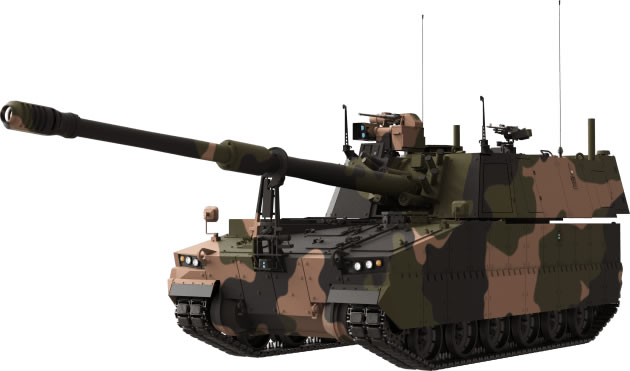
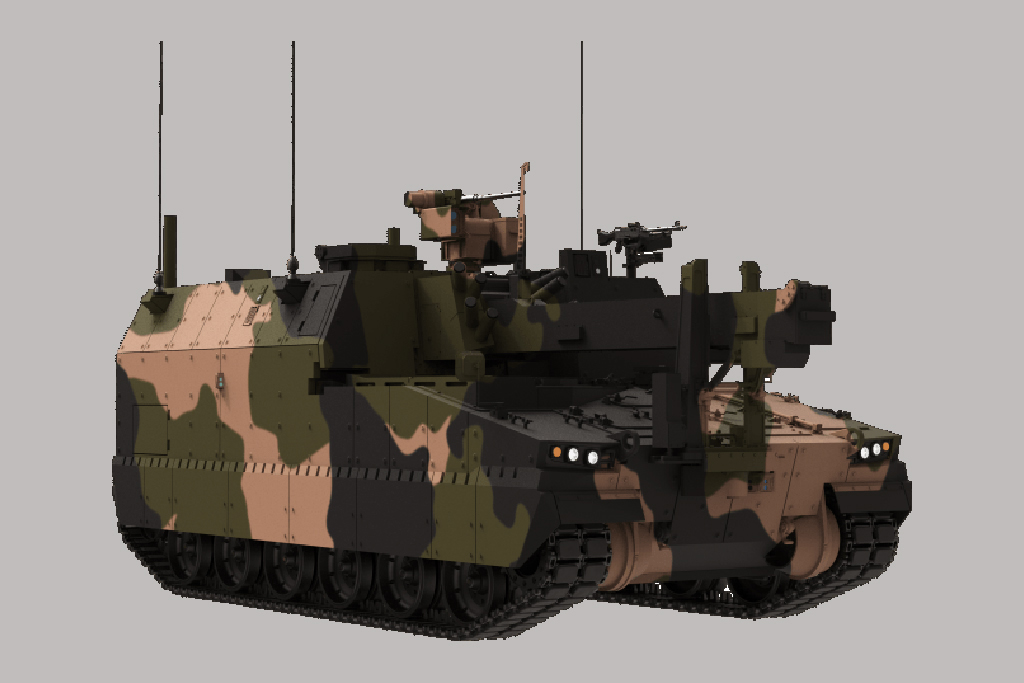
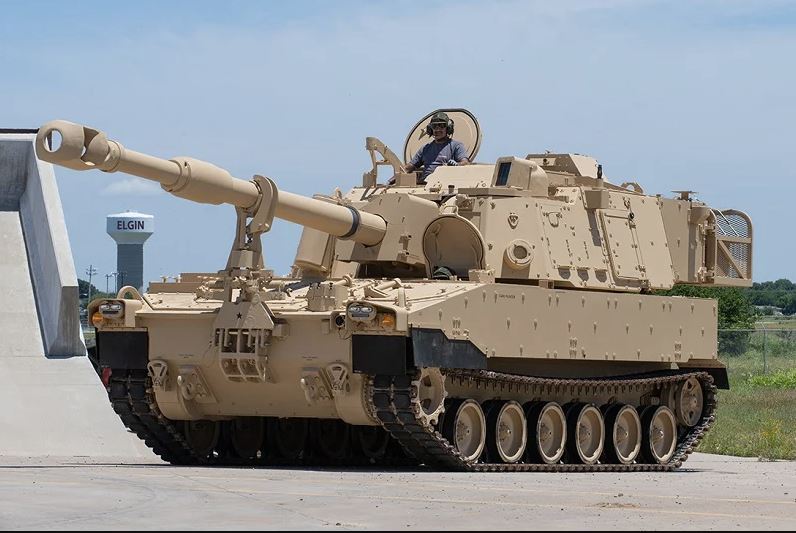

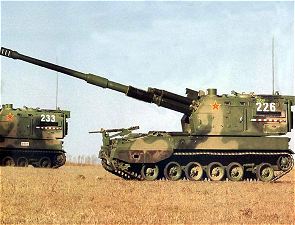
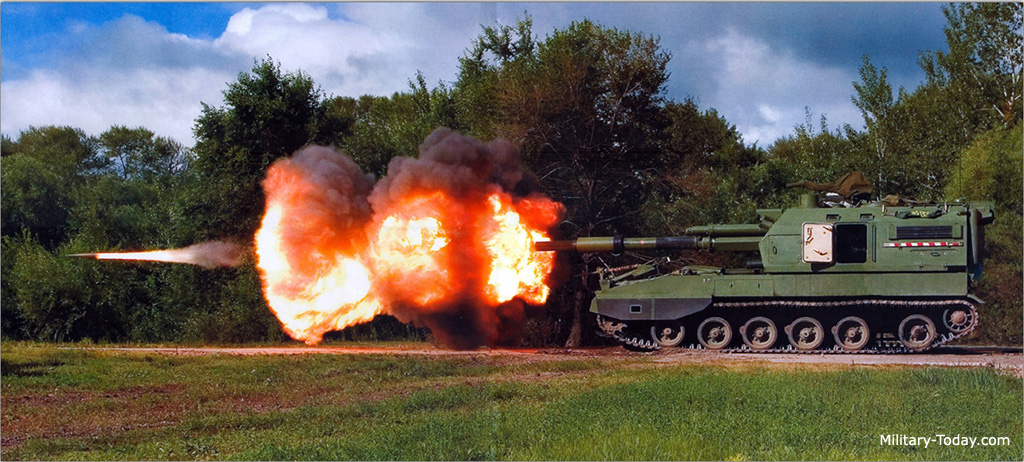

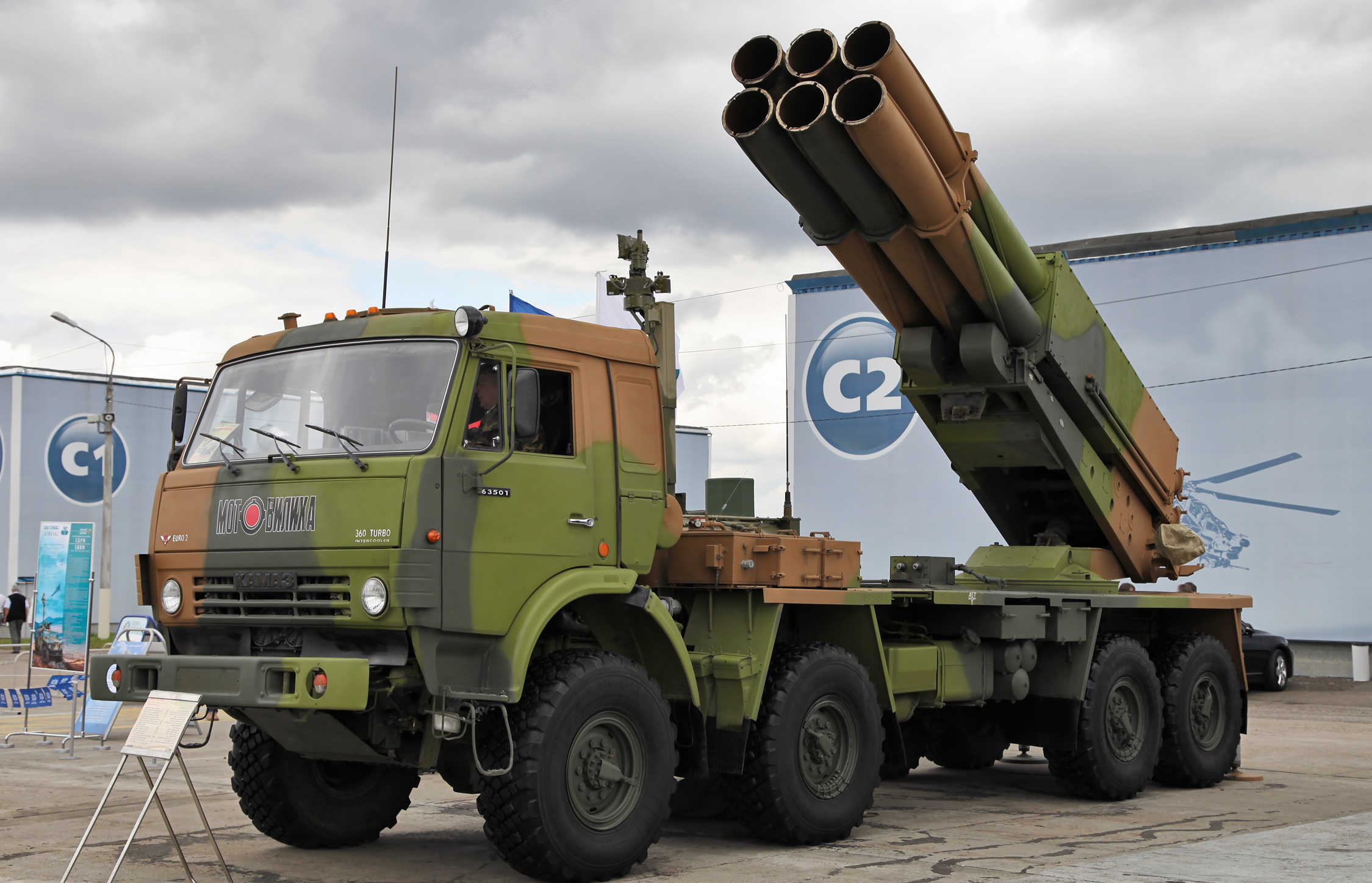
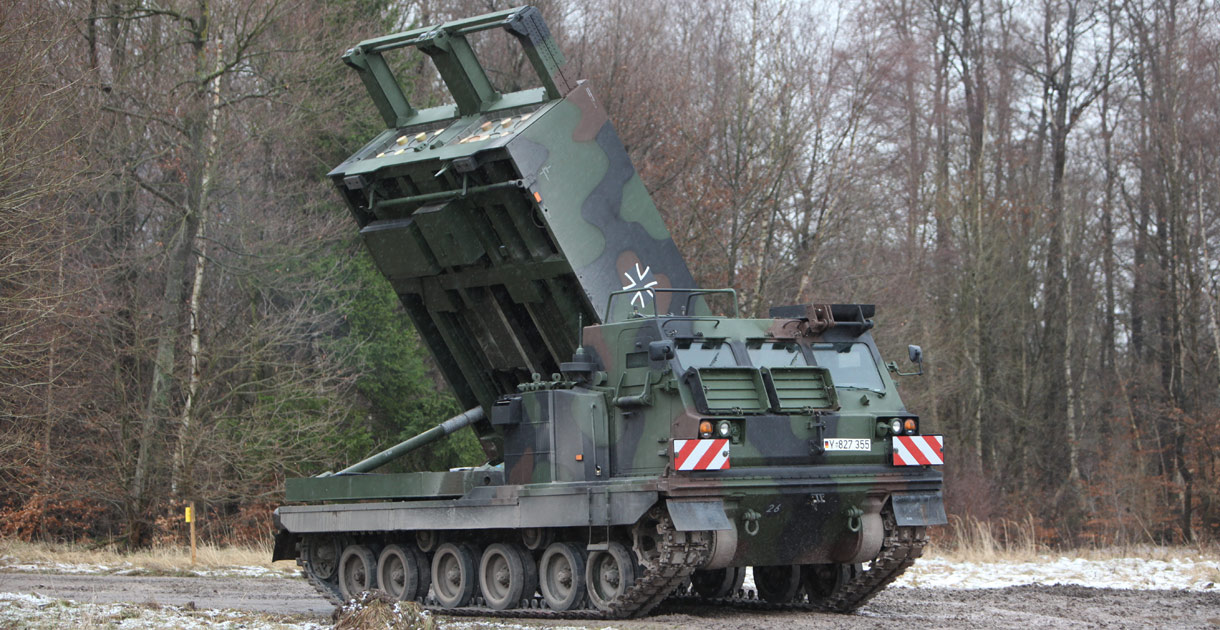
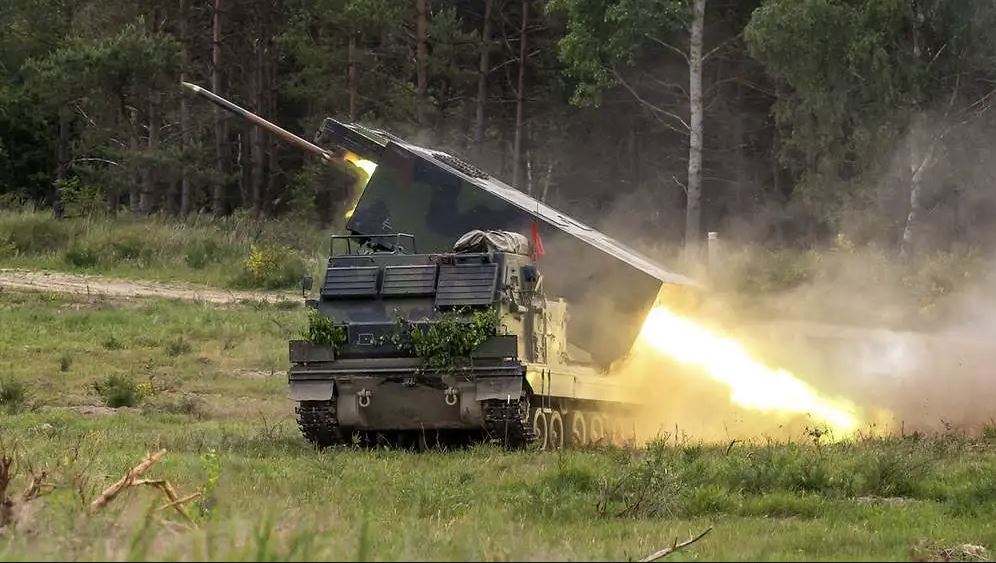
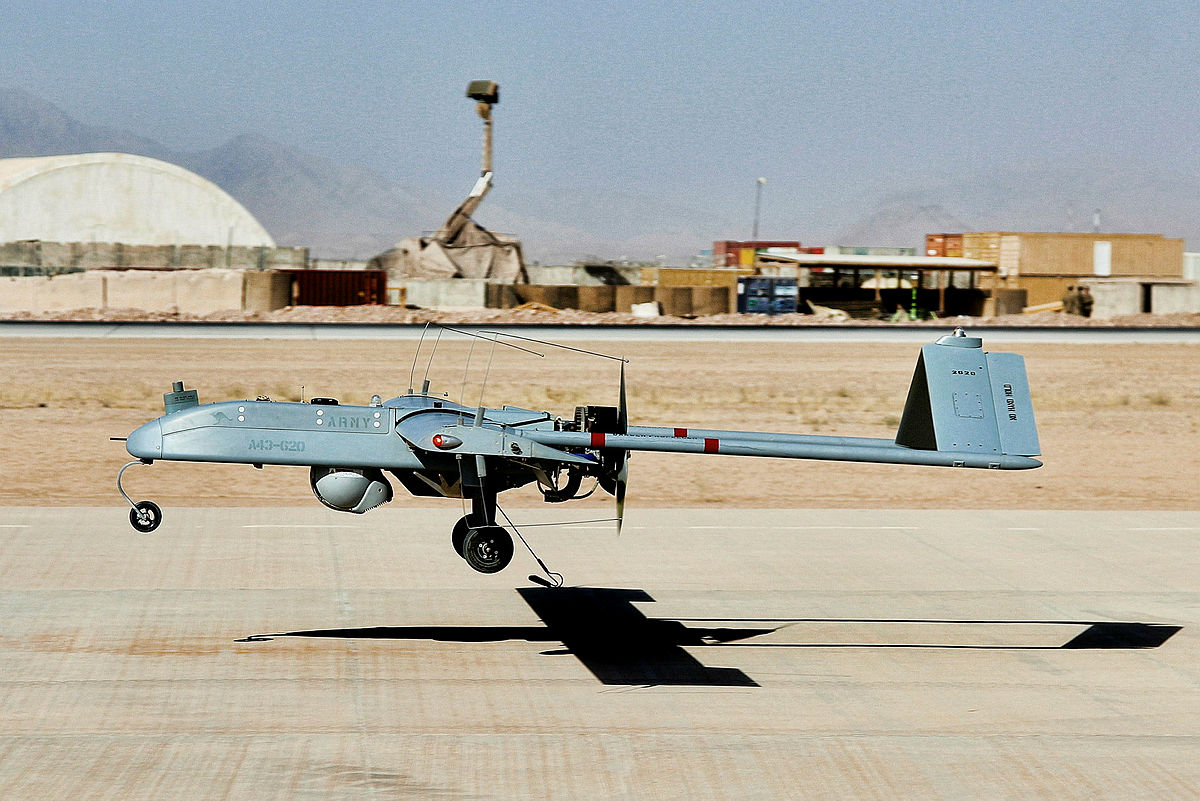

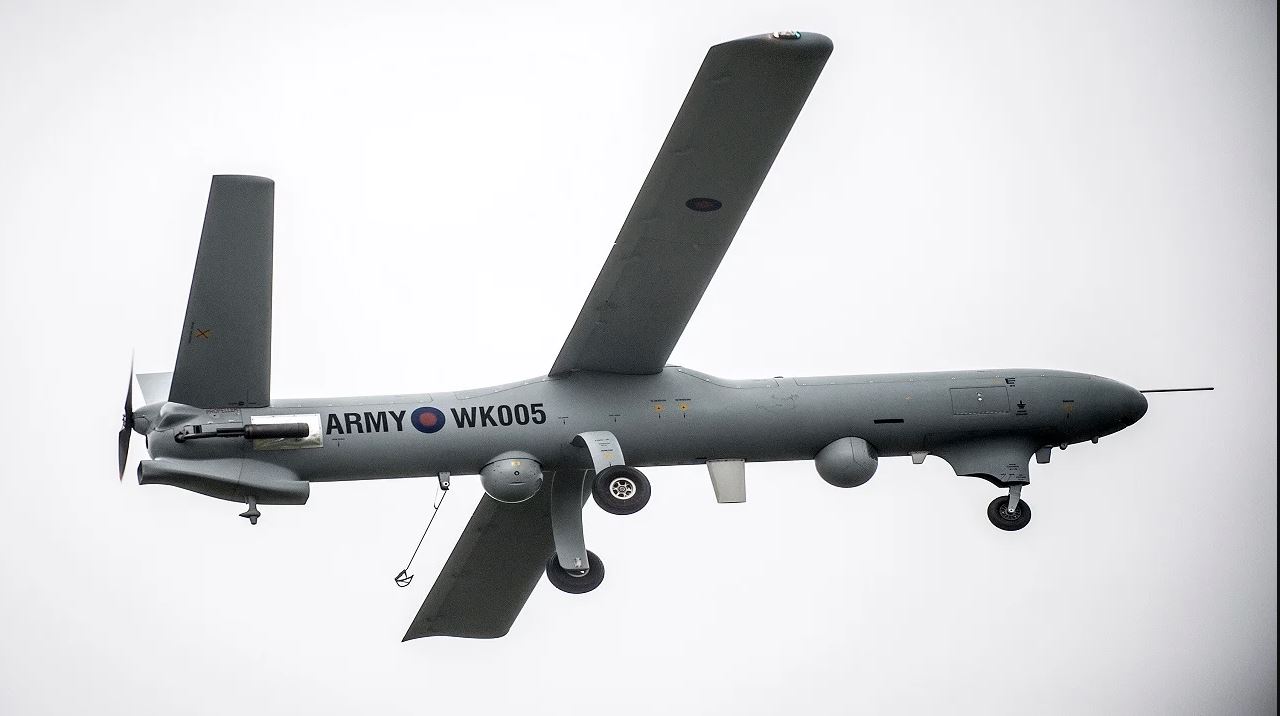
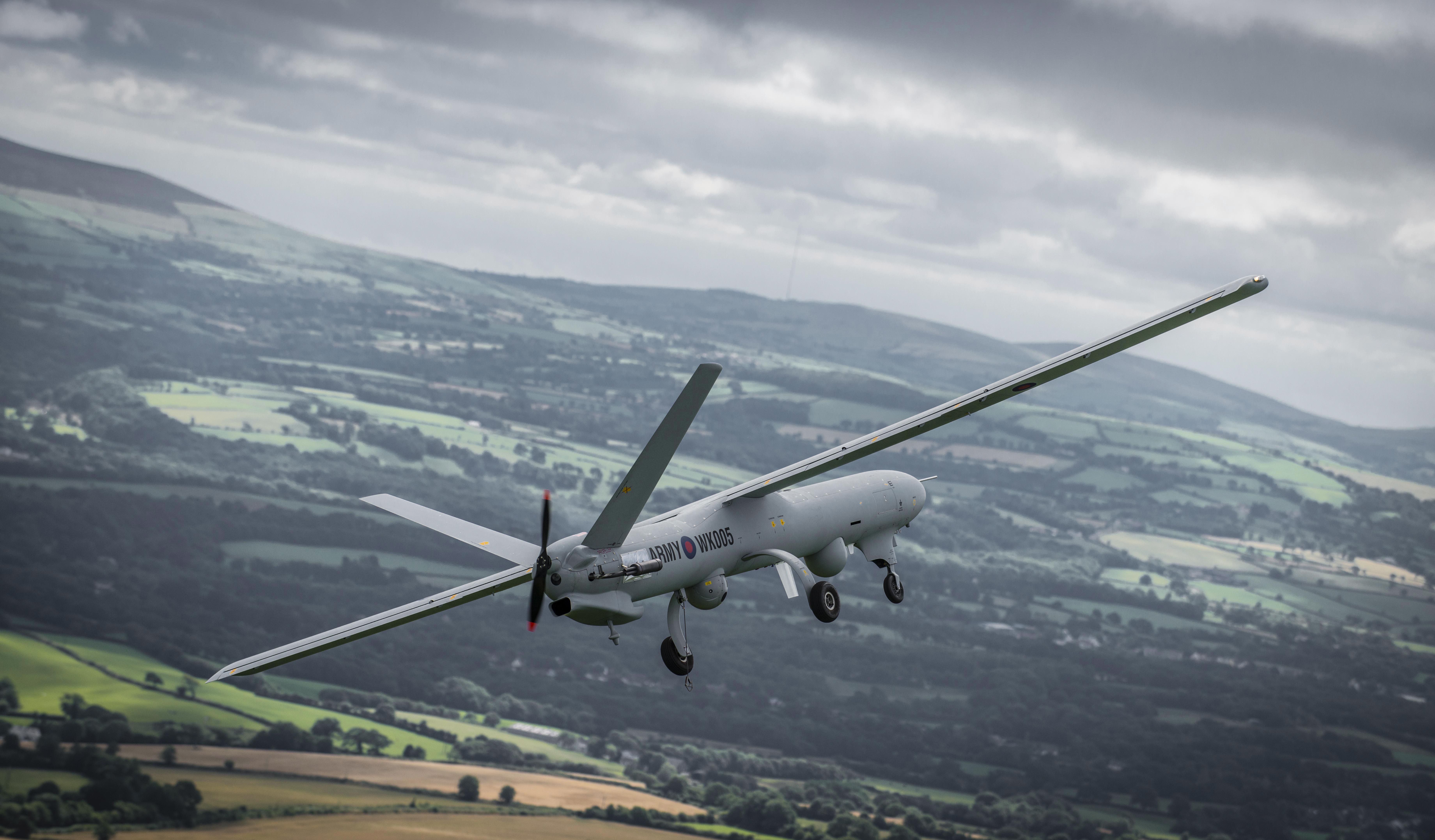
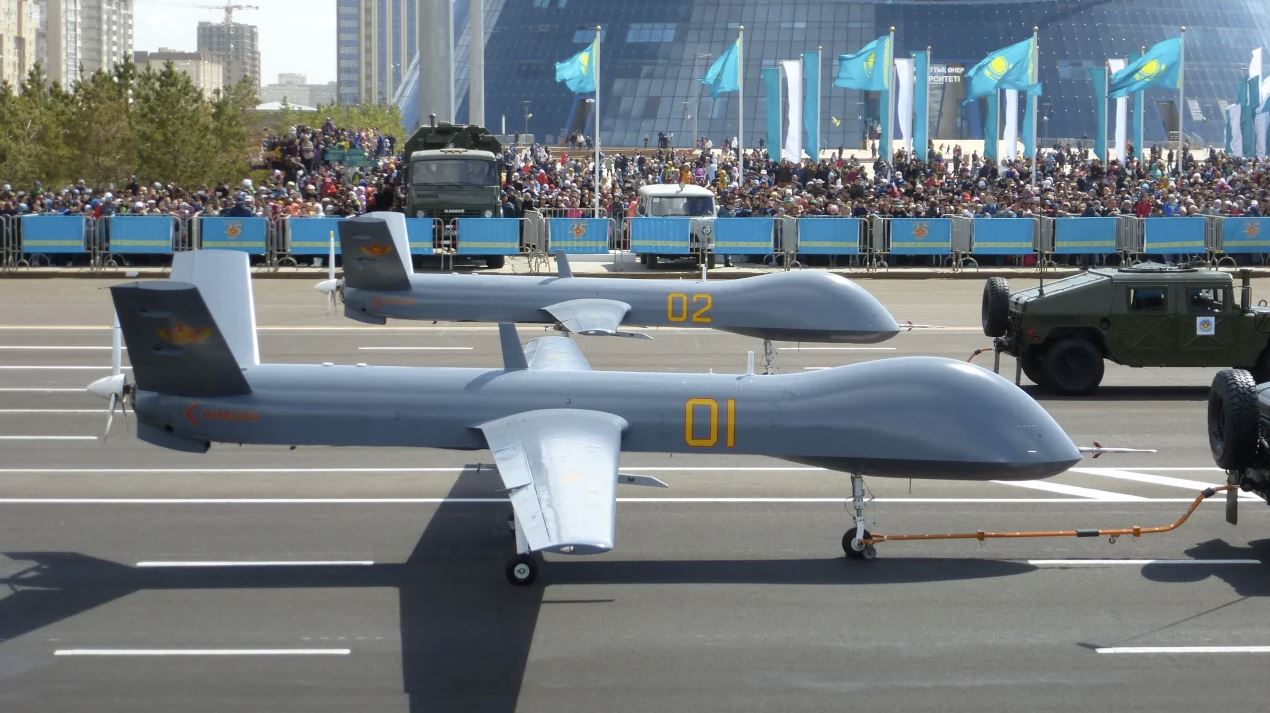

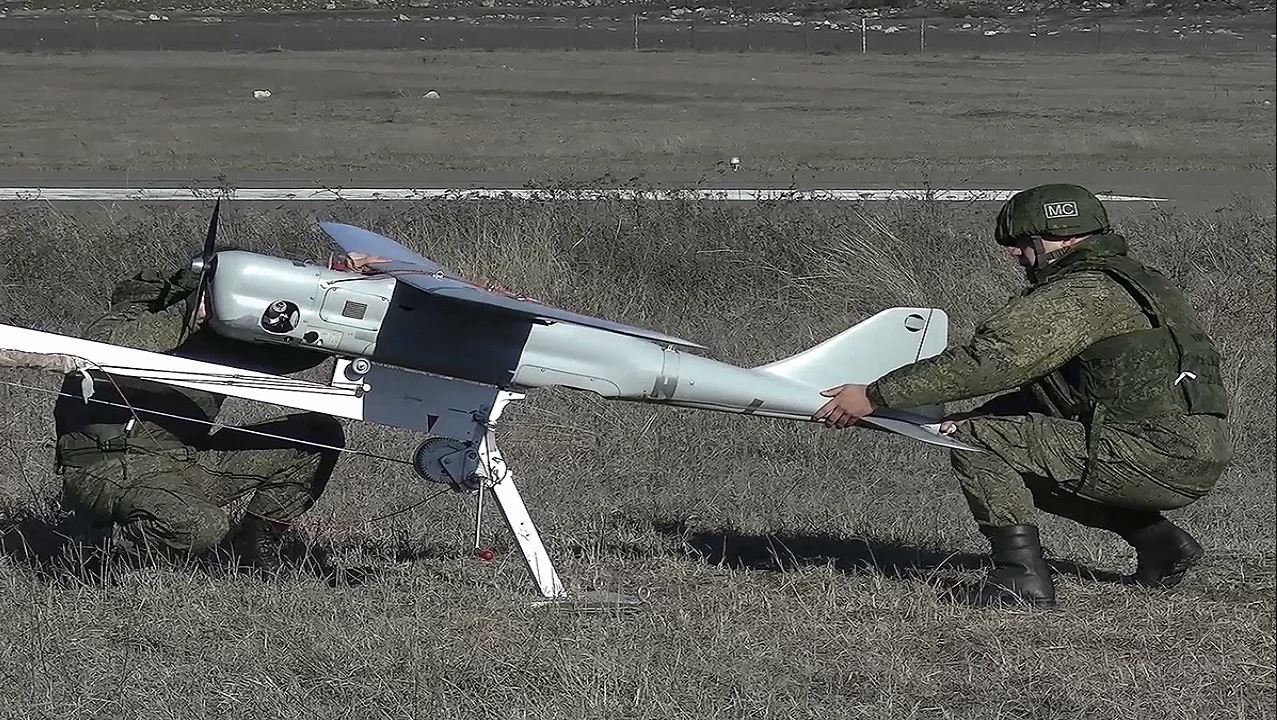

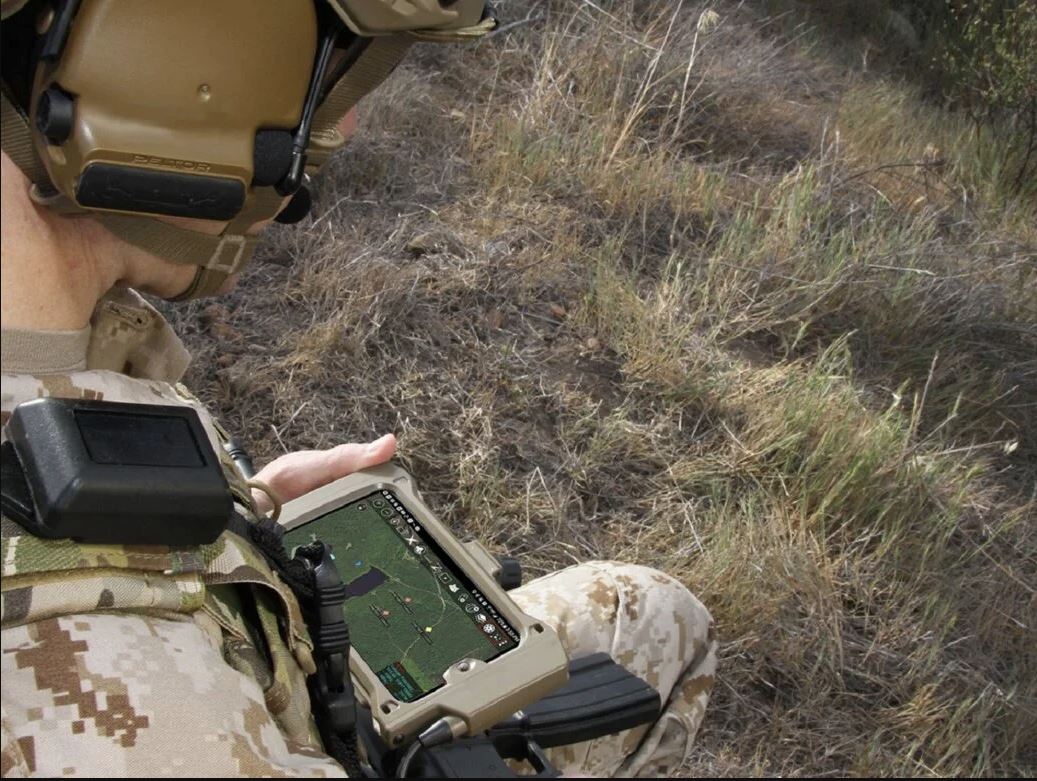
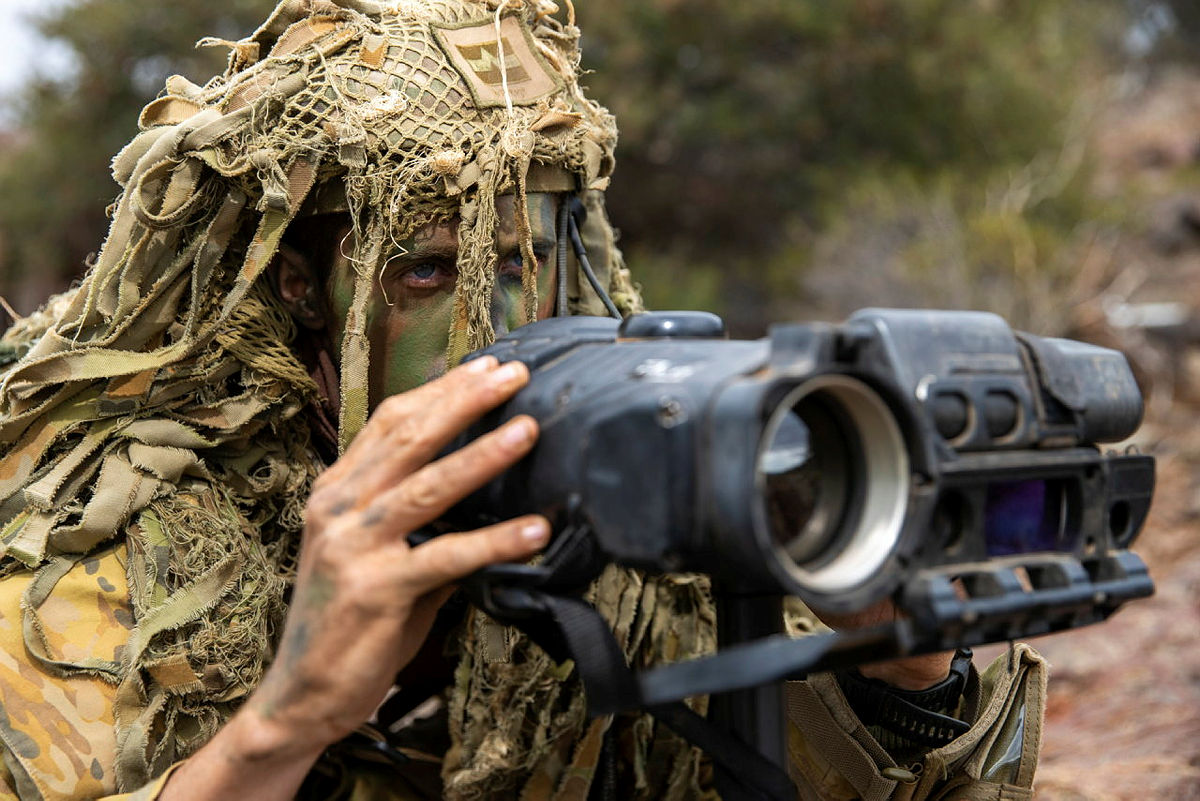







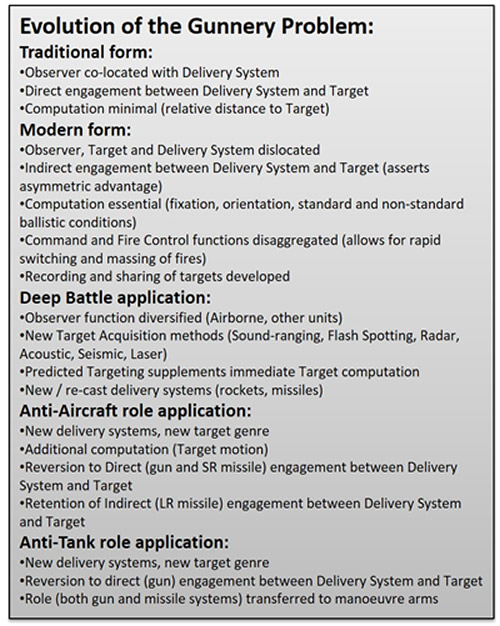



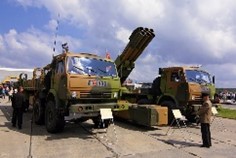



<< Pop Up 55 - Enter Your Content Here >>
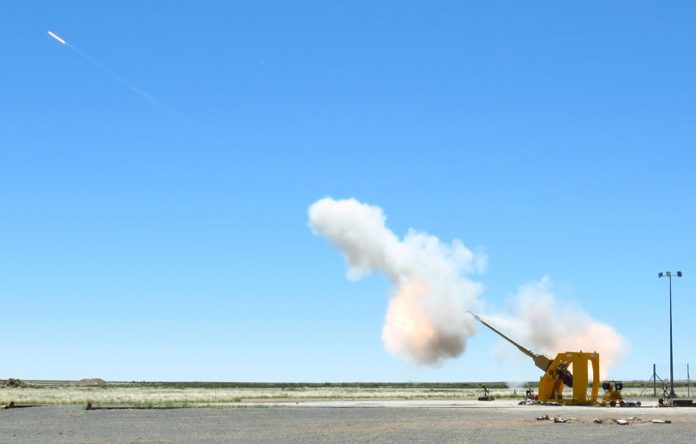

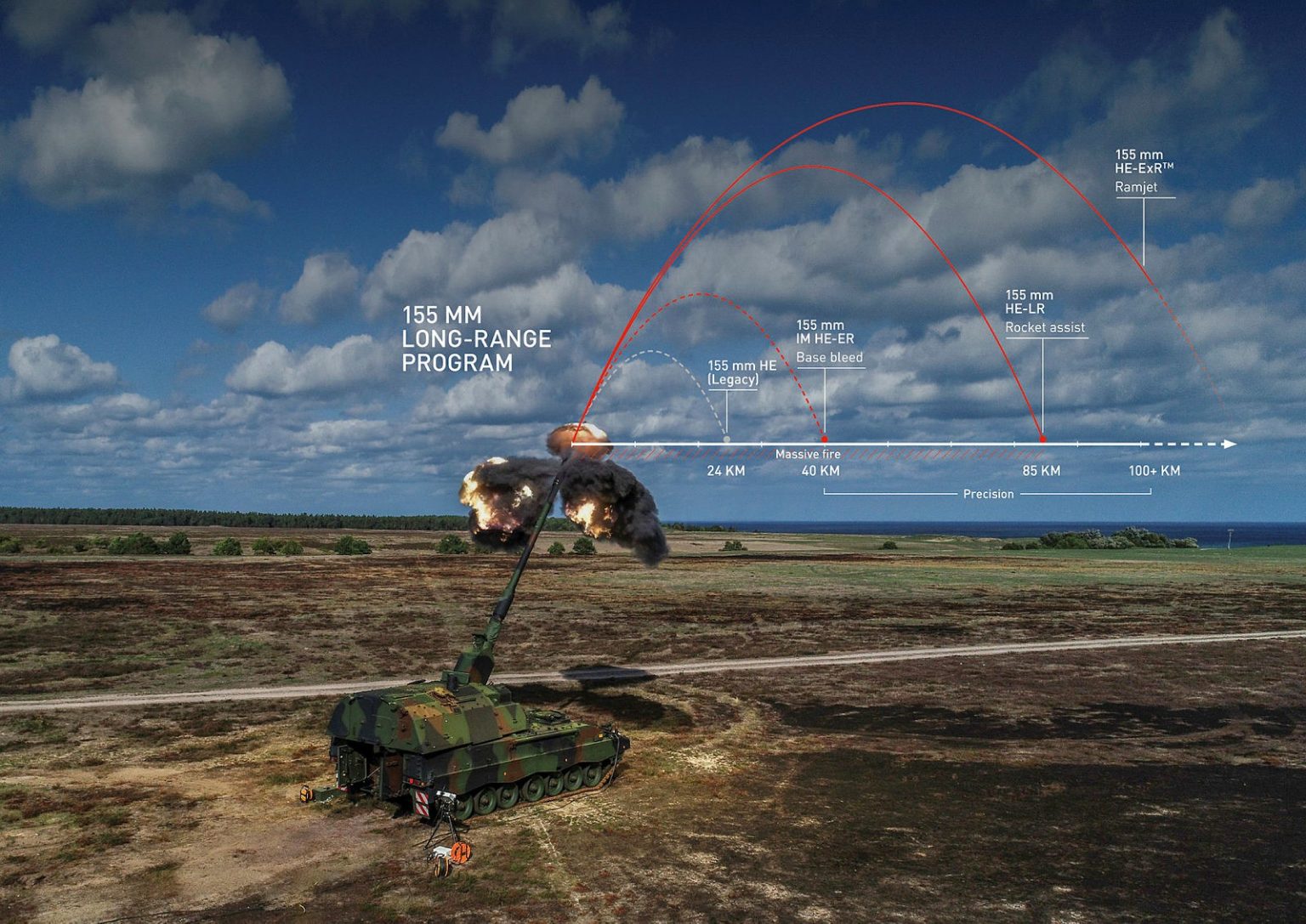
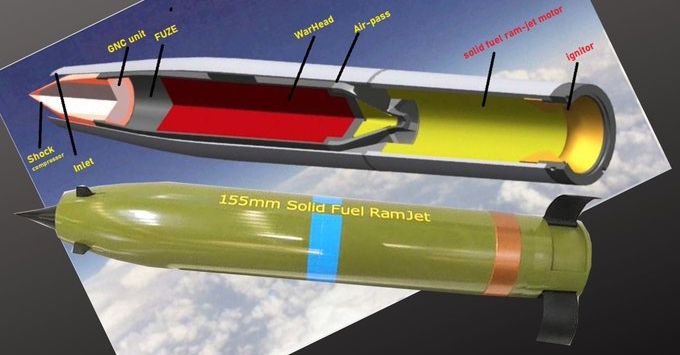
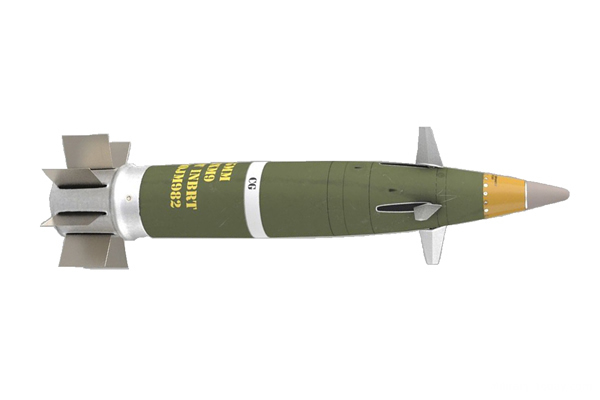

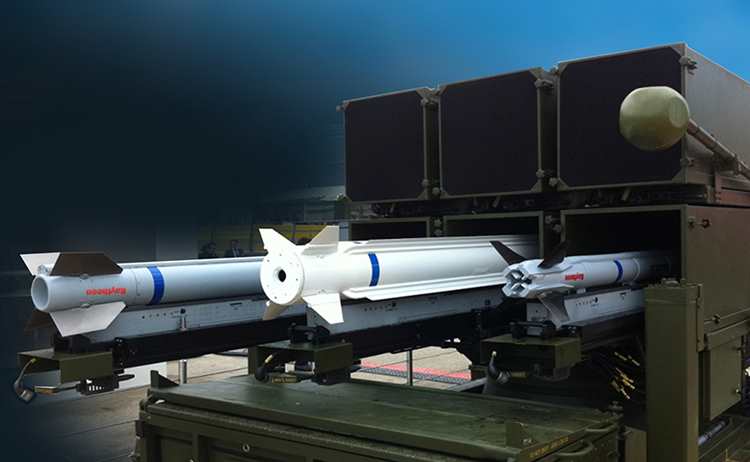
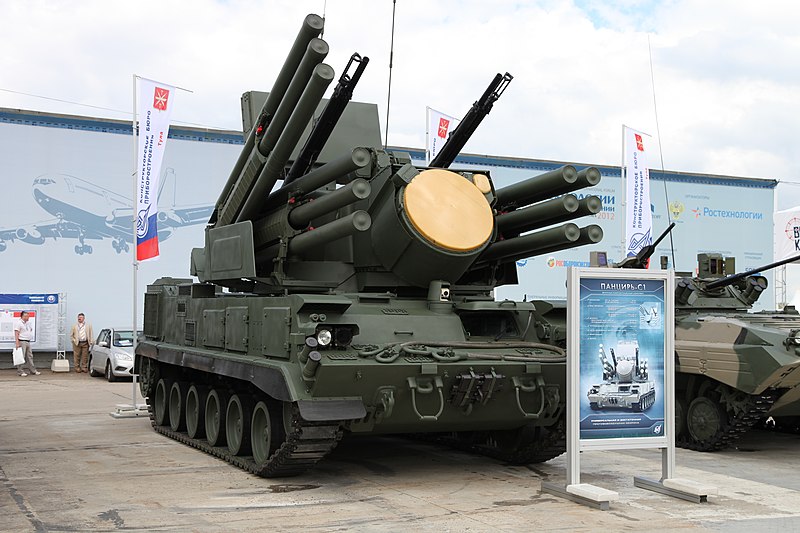
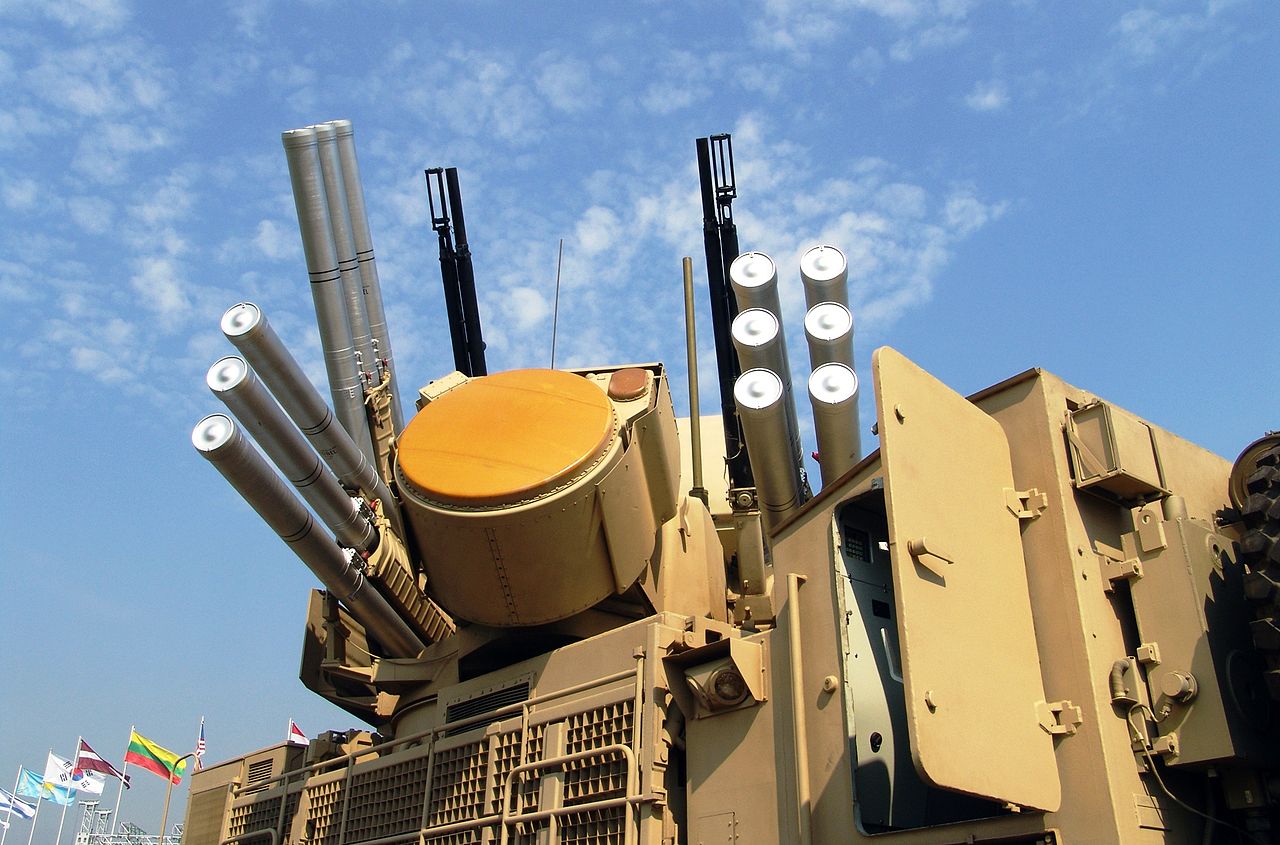
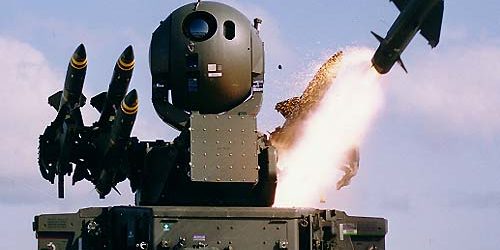
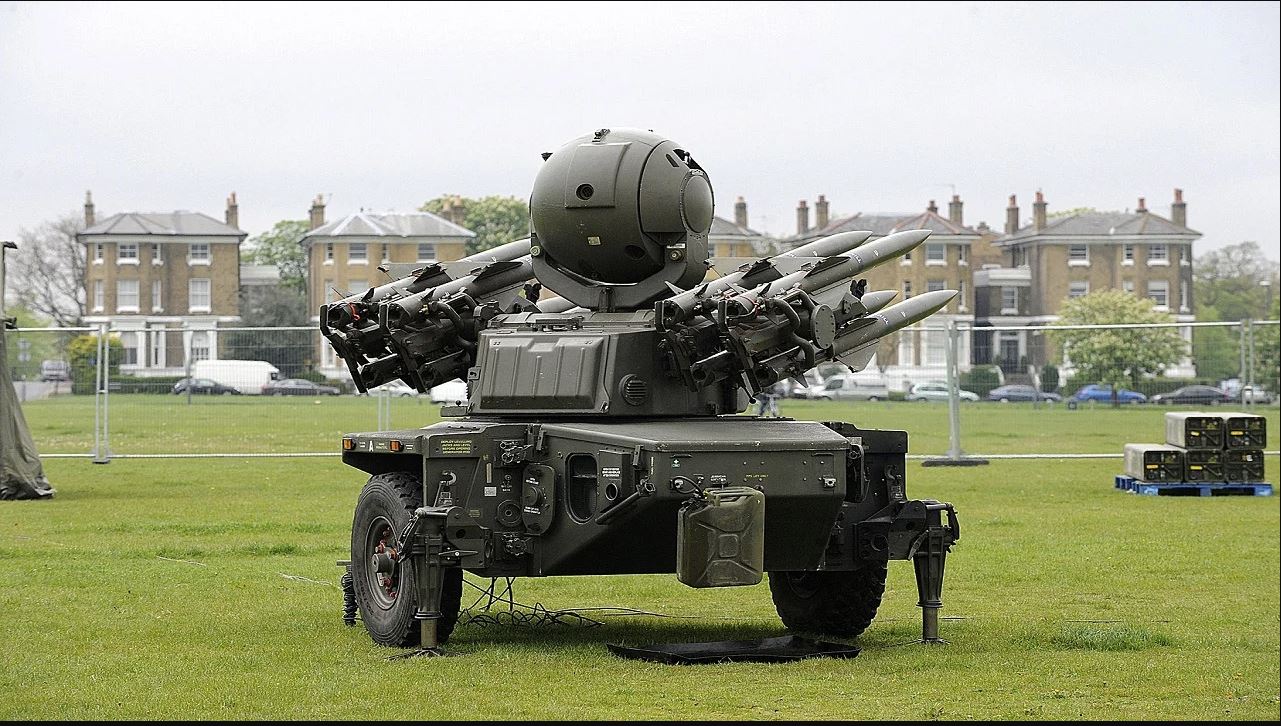

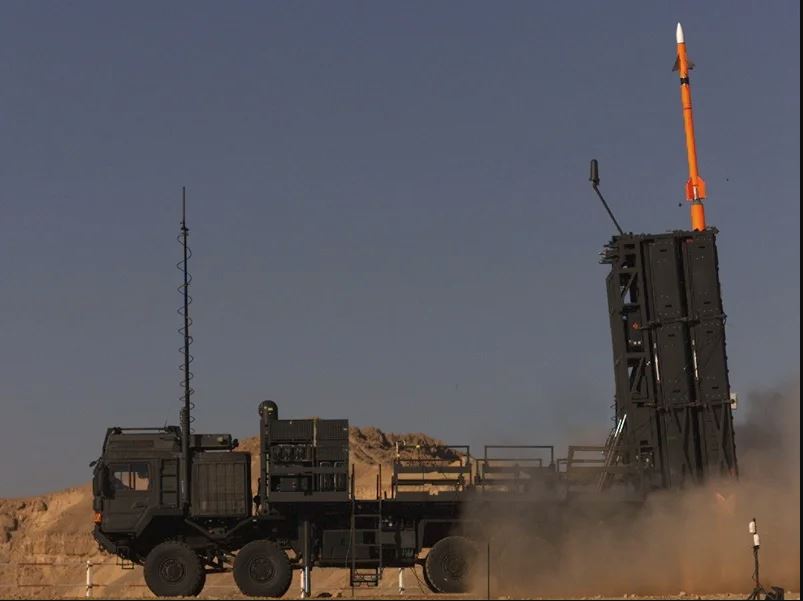










Everywhere Whither Right and Glory Lead |
||||


